Sean Connery replaced another actor two weeks into filming

One question that has often been asked of The Hunt for Red October is why Sean Connery, Scotland’s most famous actor, would wind up playing a Russian. In fact, Austrian actor Klaus Maria Brandauer, an Oscar nominee and Golden Globe winner for his performance in 1985’s Out of Africa, was initially cast as Ramius.
However, two weeks into filming Brandauer quit the film to honour a prior commitment to the European film La Révolution Française. Connery was subsequently cast at very short notice – and given a mere day of rehearsal time before he had to start shooting scenes.
The filmmakers worried the film was dated upon release due to the end of the Cold War

The Hunt for Red October hit US cinemas on the 2nd of March 1990. Tom Clancy’s original novel had first been published six years earlier, at which point the Cold War was still raging. However, by the time the film reached screens, the Cold War was essentially over, as the dissolution of the Soviet Union was in progress, and the Berlin Wall had fallen the year prior. This change in international politics was part of why The Hunt for Red October took some time to get made: there were concerns it was already behind the times.
Most studios turned the film down for being too complicated
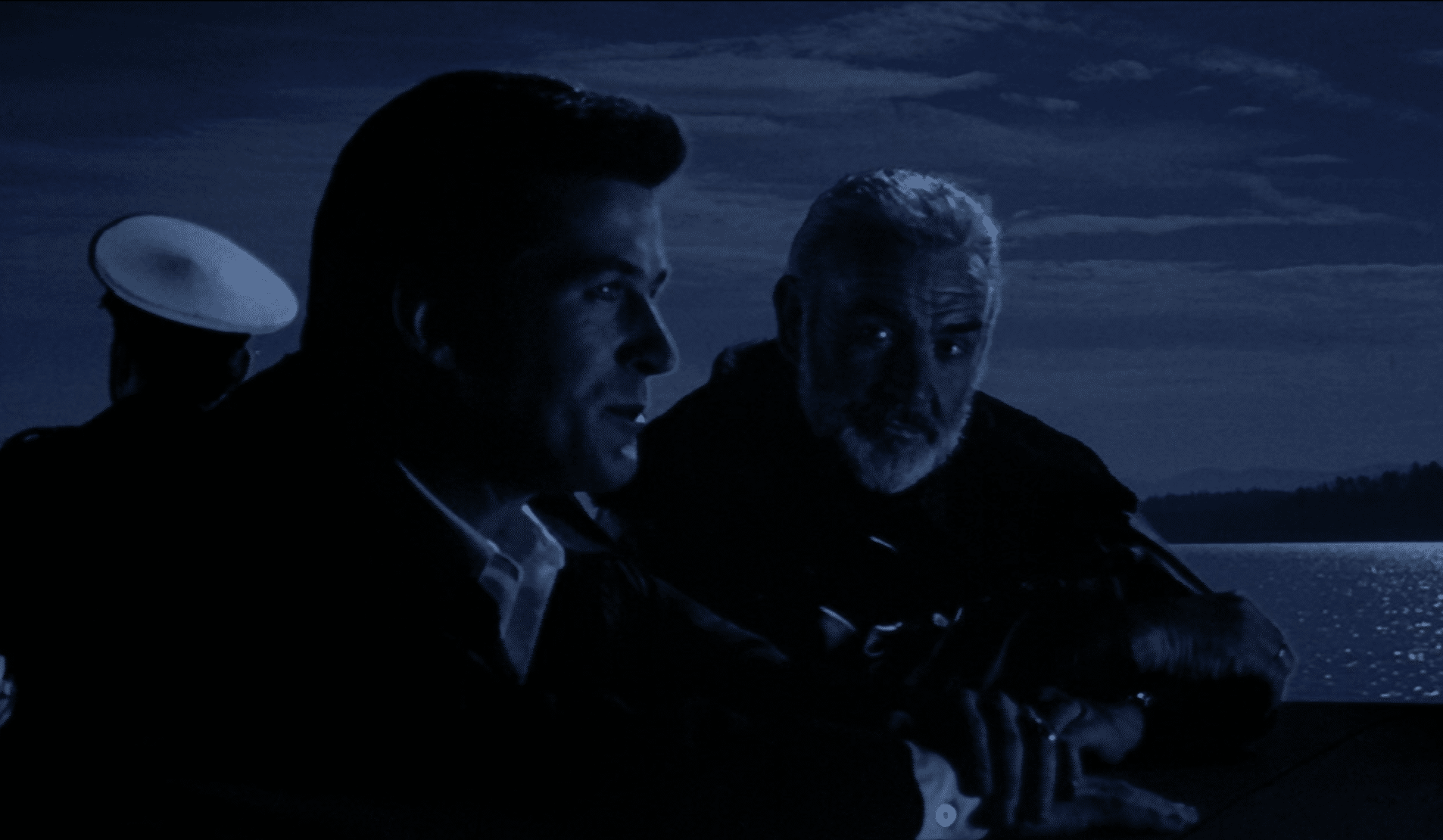
Even though Tom Clancy’s 1984 novel was a best-seller, The Hunt for Red October didn’t enjoy the smoothest journey to the big screen. Producer Mace Neufeld optioned the film rights to Clancy’s novel in 1985, seeing the cinematic potential of the material. However, Neufeld quickly found that there weren’t many others in the film industry who shared his enthusiasm.
“I read some of the reports from the studios,” Neufeld was quoted as saying, “and [they said] the story was too complicated to understand.” Eventually, however, after a year and a half of trying, an executive at Paramount Pictures agreed to take on the project. Neufeld then hired screenwriters Larry Ferguson and Donald Stewart to adapt Clancy’s 387-page novel into a screenplay.
Navy admirals hoped it would be their version of Top Gun
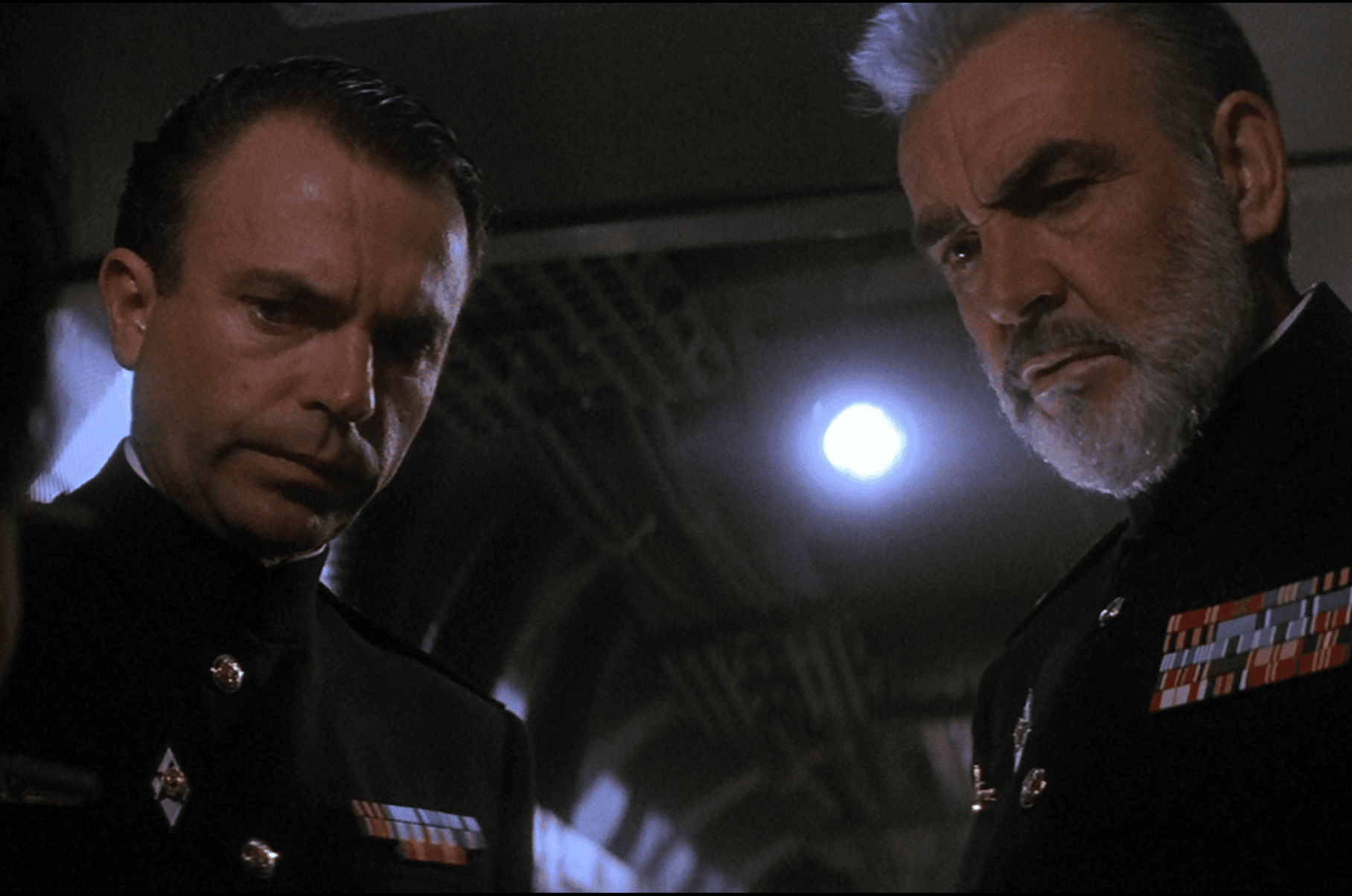
Producer Mace Neufeld had to approach the US Navy for approval before production could begin on The Hunt for Red October. There were concerns from some in the Navy regarding the subject matter of the film. The realistic nature of Tom Clancy’s novel meant that they were initially concerned the film would reveal details about top-secret technology.
However, a number of admirals within the Navy were already big fans of the novel. They saw the potential benefits of the movie, hoping it could do for submarines what Top Gun did for fighter jets. Famously, director Tony Scott’s 1986 airborne blockbuster resulted in a 500% increase in applications to the US Naval Aviator division.
Director John McTiernan had to turn down Die Hard 2 to make the film
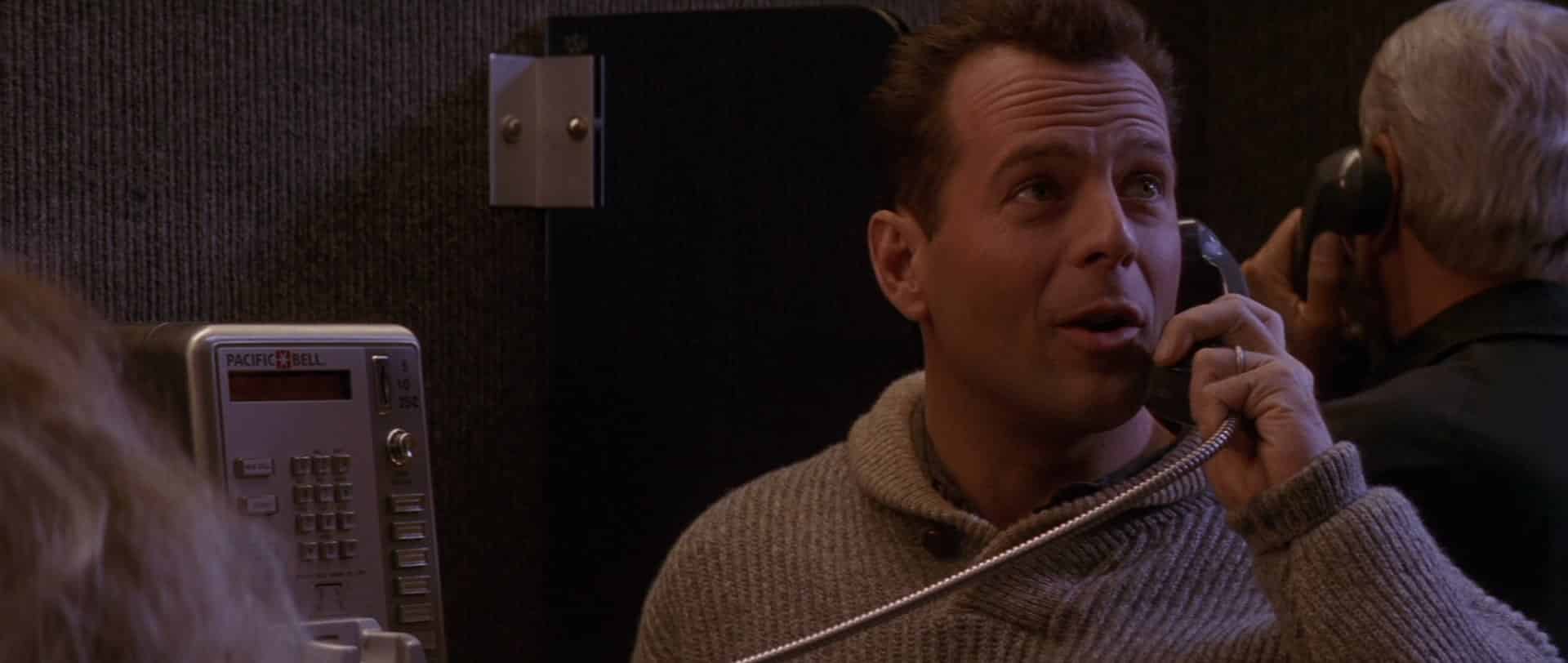
The shots were called on The Hunt for Red October by one of the hottest directors in Hollywood at the time, John McTiernan. It was the fourth film directed by the American filmmaker, who rose to fame with his second feature-length movie, 1987’s Predator. However, McTiernan really became a big name off the back of the 1988 Bruce Willis action classic Die Hard.
After the success of that action hit, McTiernan was naturally offered the director’s chair on the sequel Die Hard 2: Die Harder. However, McTiernan was forced to pass on Bruce Willis’ second movie as John McClane as he had already committed to The Hunt for Red October. Instead, Renny Harlin directed Die Hard 2, and McTiernan would eventually return to the franchise on 1995’s Die Hard with a Vengeance.
Sean Connery shot his first scenes wearing a ponytail wig

By 1990, Sean Connery had long since admitted to the world at large that he was bald, but he still tended to wear wigs on screen. On the set of The Hunt for Red October, however, the screen legend’s hairpiece proved to be a serious point of contention. Connery originally arranged his hair and make-up independently of director John McTiernan, and the wig he picked out had a small ponytail attached.
McTiernan was not at all pleased, as a ponytail was clearly out of character for a Russian submarine commander, but also because the wig itself looked dreadful. In fact, director of photography Jan De Bont allegedly told Connery the little ponytail resembled a “limp, swinging d**k.” Initially, they started shooting with the ponytail wig, but after being widely mocked by the crew, Connery conceded he’d made the wrong choice, and his first two days’ worth of scenes had to be re-shot.
That isn’t a real Christopher Columbus quote at the end
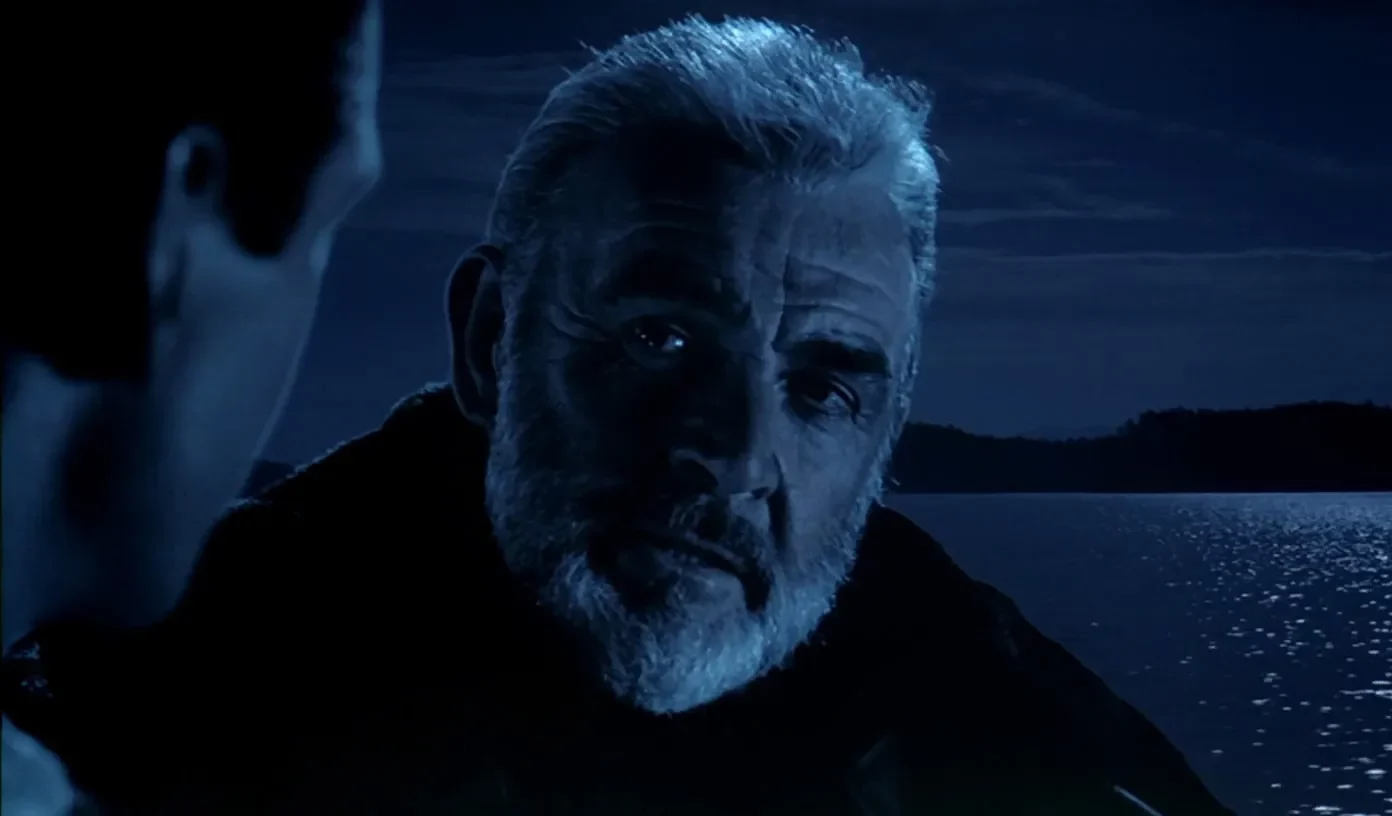
In the final moments of The Hunt for Red October, Ramius poetically reflects, “And the sea will grant each man new hope, as sleep brings dreams of home.” According to Connery’s character, this is a direct quote from Christopher Columbus. However, in reality, the legendary explorer who discovered America never said any such thing.
Director John McTiernan confirms in the film’s DVD commentary that this poem was made up specifically for the movie. It wasn’t Christopher Columbus who composed those words, but The Hunt for Red October screenwriter Larry Ferguson.
500 different sonar ping sound effects were created before the film’s director was happy

It’s often surprising just how much time and effort can go into what may seem like a minor detail in a movie. In the case of The Hunt for Red October, a huge amount of work was put into finding the right sound for the pings of the submarine’s sonar. Many of the submarine sound effects were recorded from real sources, but the sonar ping was created using electronics.
The film’s sound designer, Frank Sarafine, revealed that his team created about 500 different submarine sonar pings before the film’s director, John McTiernan, was happy. This long, drawn-out process involved a wide variety of electronic instruments, different forms of amplification, and even running the sound through an underwater speaker in a swimming pool.
They filmed on studio sets instead of real submarines
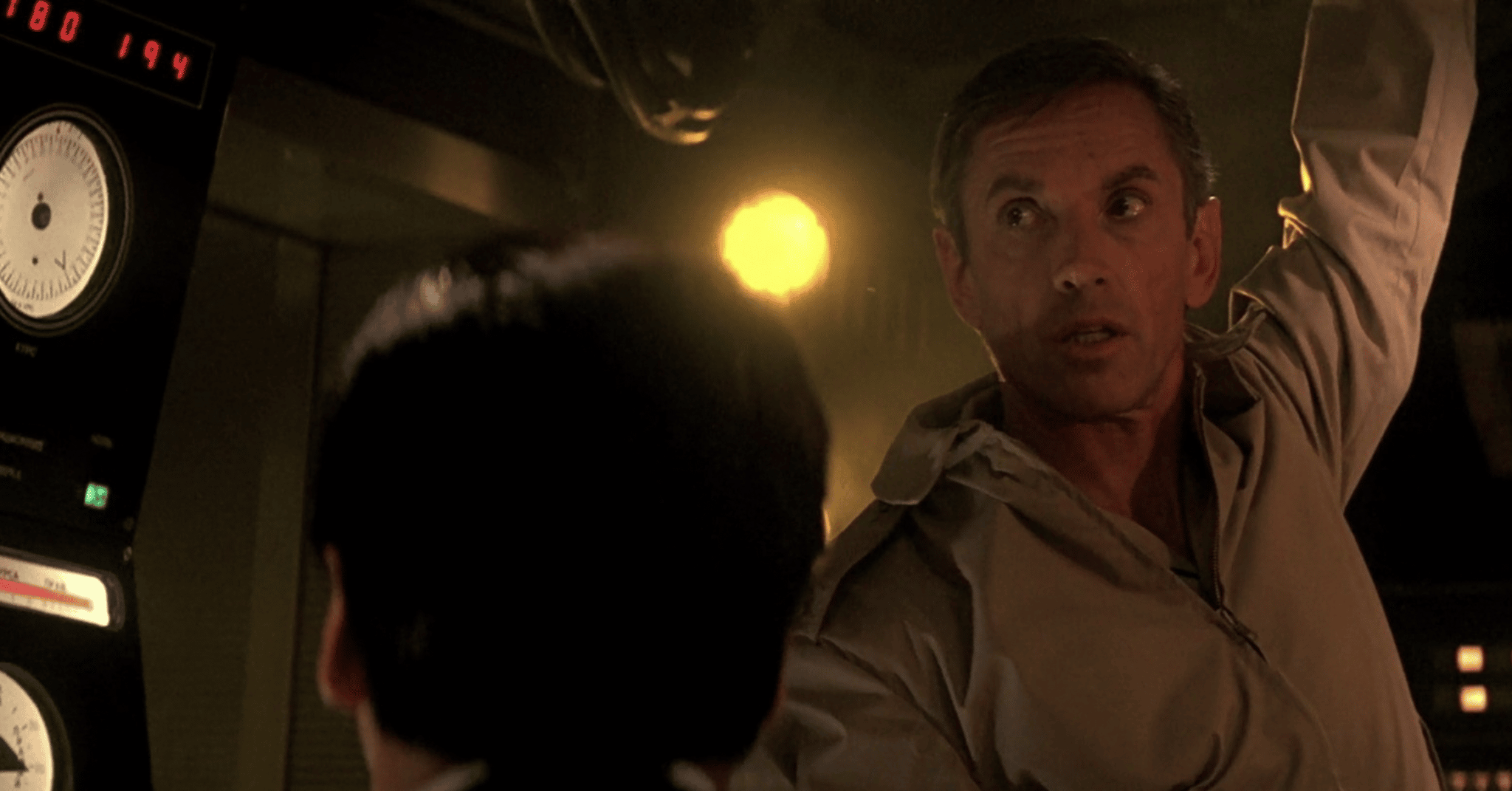
The US Navy gave their full support to The Hunt for Red October and allowed the filmmakers to make use of real submarines. To this end, the crew shot footage of the USS Houston as a double for the USS Dallas on the exterior shots. However, when it came to shooting interior submarine scenes, shooting inside those infamously claustrophobic vehicles was deemed impractical.
As a result, all the interior scenes were shot on specially built sets, designed to be as accurate as possible. To increase that accuracy, the sets were built on top of special hydraulic gimbals to mimic underwater movements, which Sean Connery says made him feel seasick.
There are only three speaking parts for women in the entire movie
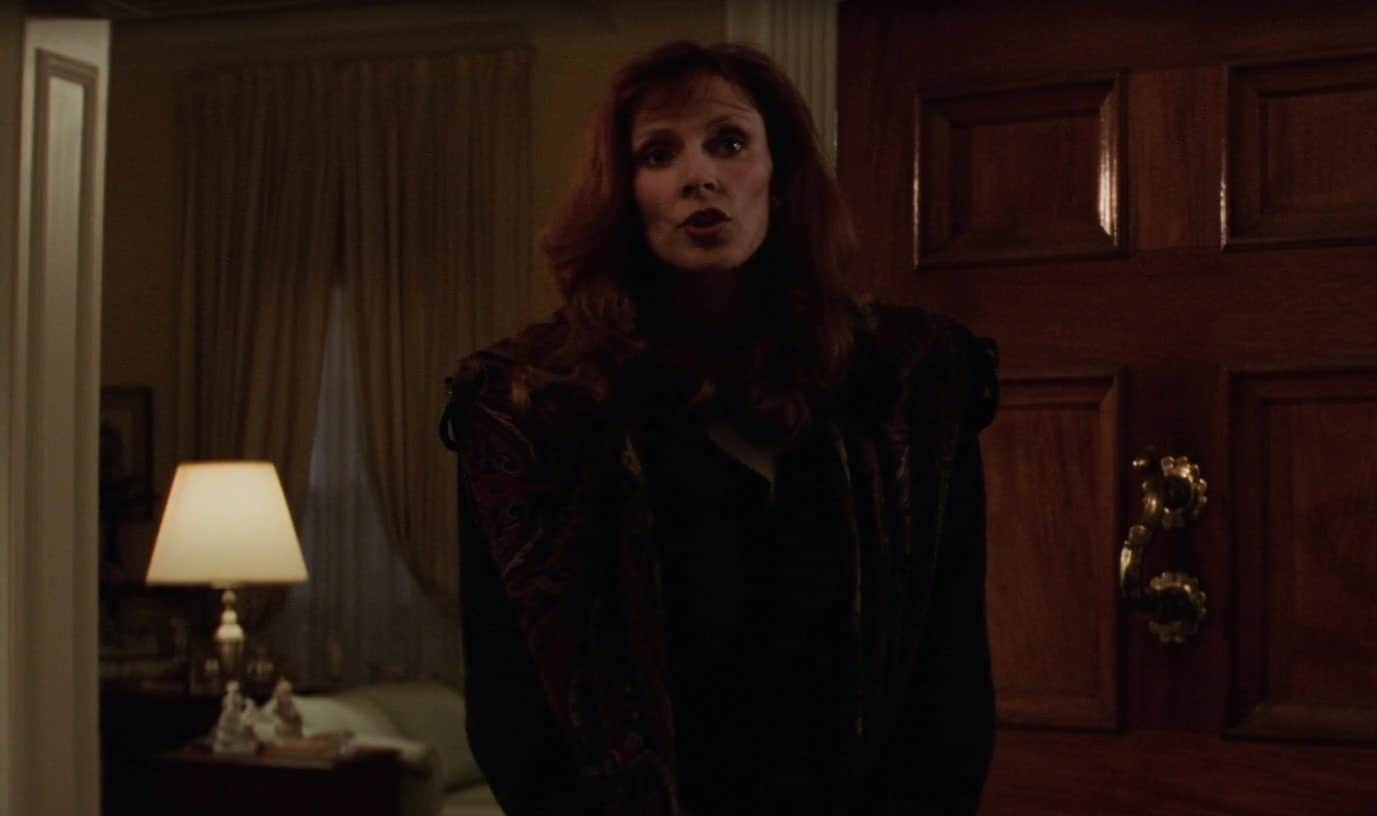
Nowadays we hear a lot of calls for greater female representation in film – and The Hunt for Red October doesn’t hold up too well on that front. It’s such a predominantly male movie that it has a grand total of three female speaking parts. The most prominent of these is Gates McFadden, who co-stars as Cathy Ryan, wife of Alec Baldwin’s Jack.
McFadden took the role shortly after being fired from TV’s Star Trek: The Next Generation (for which she was later re-hired), and reportedly most of the scenes she shot were left on the cutting room floor.
Many of the cast had served in the military before they became actors
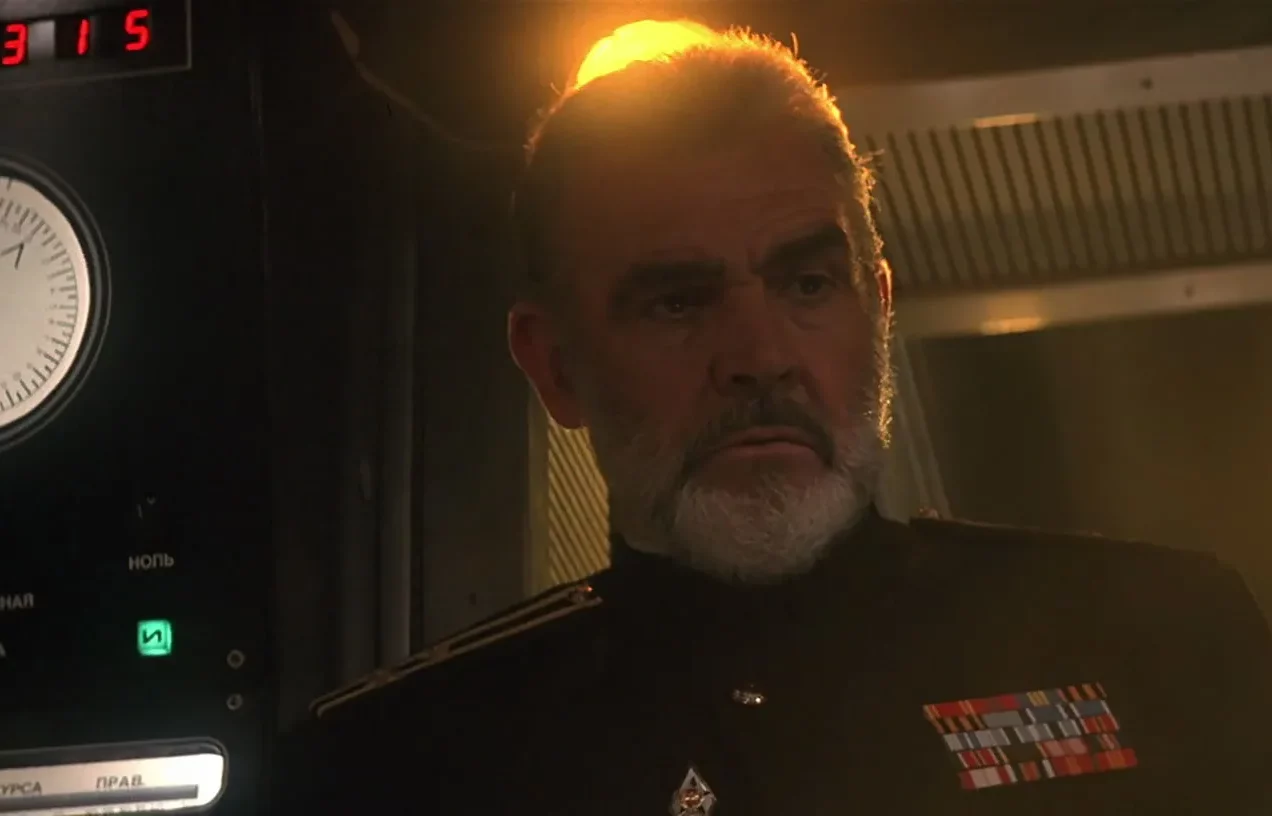
It’s not unheard of for Hollywood movies that centre the Armed Forces to feature actors who had previously served. However, in the case of The Hunt for Red October, a striking number of cast members were military veterans. Firstly, leading man Sean Connery himself served in the Royal Navy from 1946 to 1949, before becoming a bodybuilder and ultimately an actor.
In addition, co-star James Earl Jones had previously served in the US Army just after the Korean War. Likewise, Scott Glenn (best known for his supporting role in The Silence of the Lambs) was a former US Marine. On top of this, many of the film’s extras were real-life submariners, largely because they were cheaper to hire than actors.
Russian characters switch from speaking Russian to English and then back again
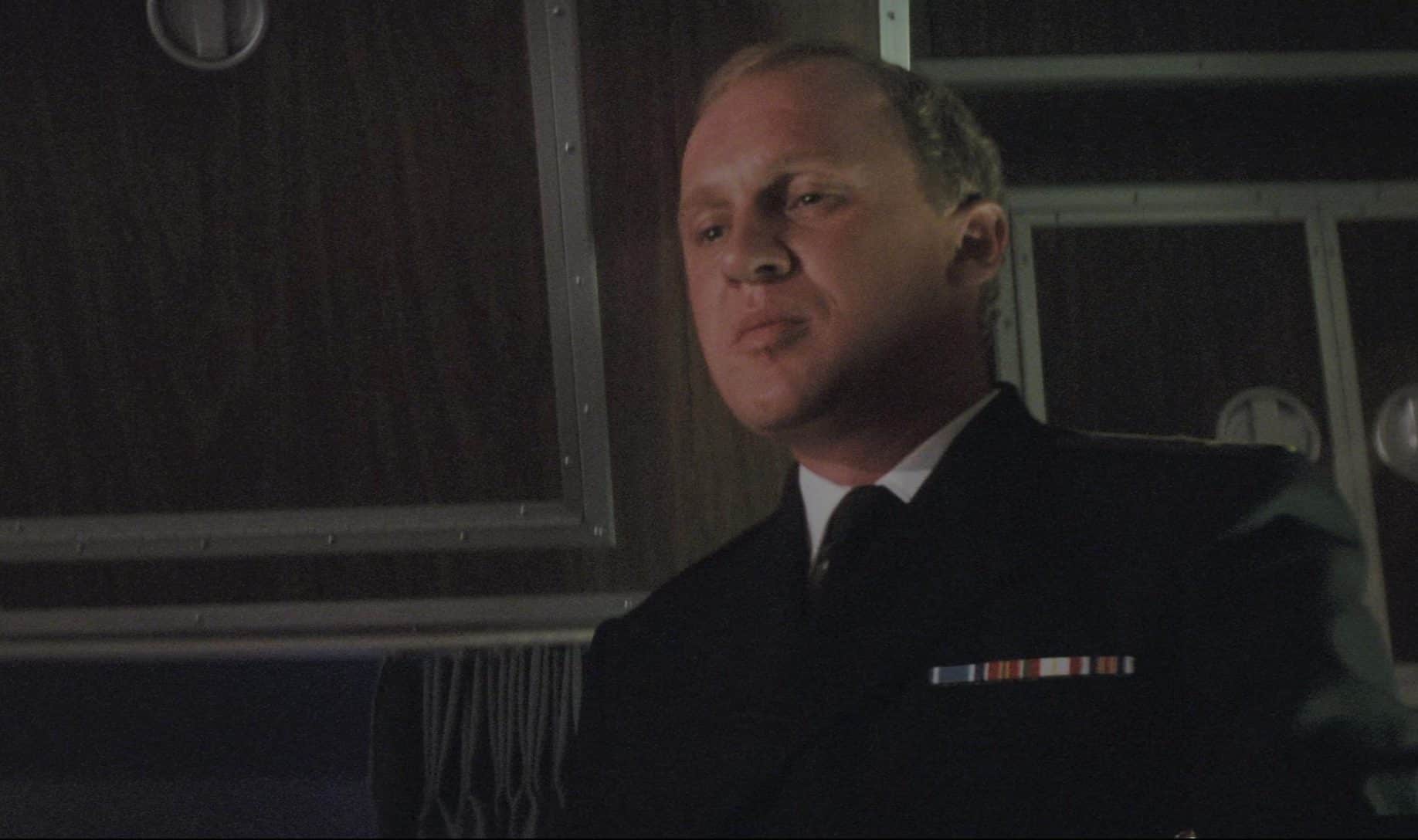
The Hunt for Red October makes an interesting creative choice regarding the prominence of its Russian characters. It was felt that shooting the Russian scenes entirely in that language and using subtitles would prove off-putting to audiences. Shooting in Russian would also have proved impractical given most of the actors were not actually Russian.
As a compromise between realism and accessibility, the filmmakers decided that Russian characters would begin by speaking in Russian with subtitles, and then switch to speaking in English. If you notice, this change happens when actor Peter Firth switches languages mid-sentence after saying “Armageddon,” a word that is the same in both Russian and English.
Kevin Costner was the first choice to play Jack Ryan
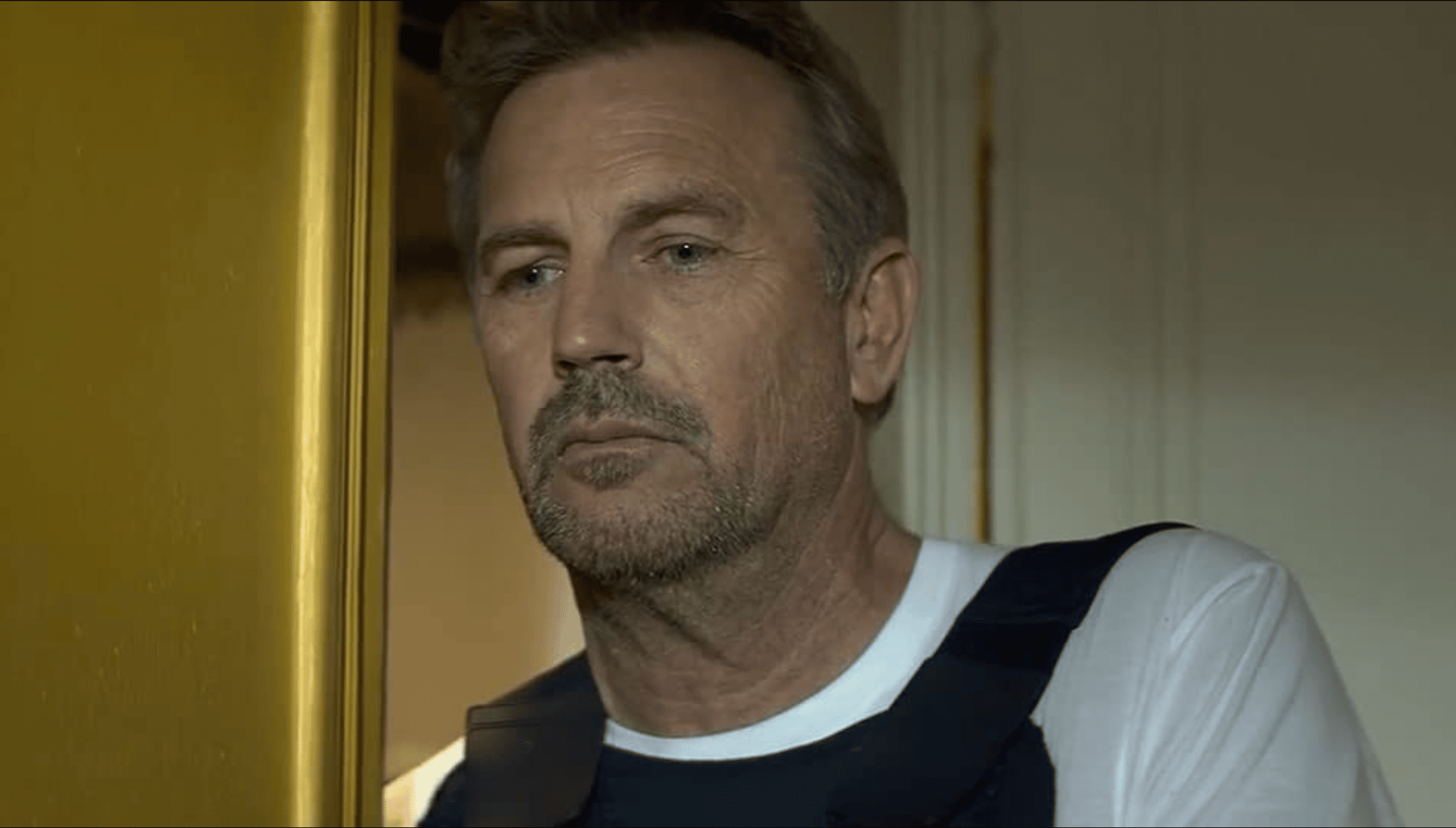
The Hunt for Red October features the celebrated screen stars Sean Connery and Alec Baldwin in the lead roles. However, this wasn’t always going to be the case, as neither actor was the first choice for their roles. Before Baldwin was cast as Tom Clancy’s All-American hero Jack Ryan, Kevin Costner was offered the part.
However, Costner declined the offer as he was poised to direct and star in Dances with Wolves. After Costner said no, the filmmakers reportedly pursued Harrison Ford, who also turned it down, clearing the way for Baldwin. Ford would later play Ryan in sequels Patriot Games and Clear and Present Danger, whilst Costner would take a supporting role in 2014’s Jack Ryan: Shadow Recruit.
It’s based on Tom Clancy’s very first novel
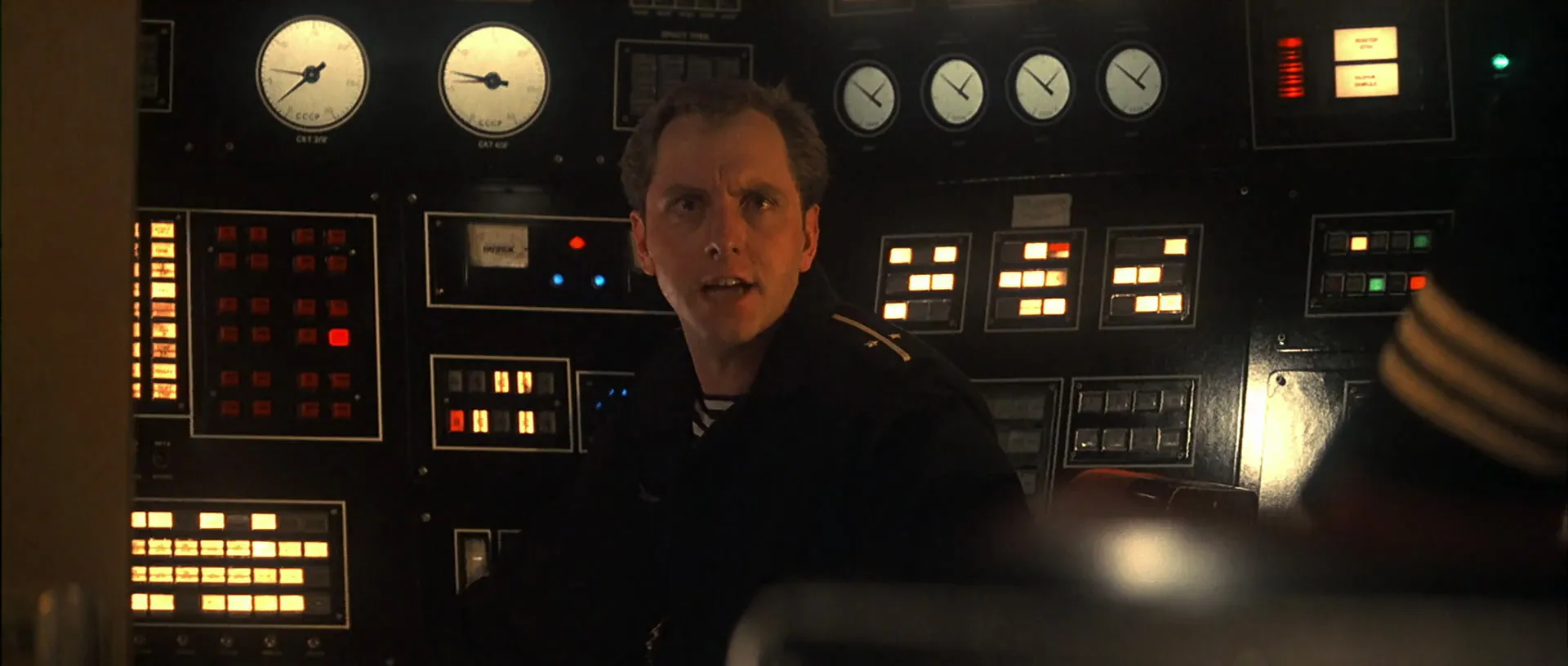
Since the 80s, Tom Clancy has been one of the biggest names in popular fiction. The Maryland-born author, who passed away in 2013, has sold over 100 million books worldwide. It all began with The Hunt for Red October, which was the first of 19 novels written or co-written by Clancy.
The Cold War submarine thriller, which introduced Clancy’s recurring hero Jack Ryan, was originally published in 1984. It was only fitting, then, that this first novel of Clancy’s should be the first to be adapted to film six years later. Sales of the novel were given a massive boost when Ronald Reagan, the US president at the time, revealed he was a big fan of it.
Celebrated screenwriter John Milius did uncredited work on the screenplay
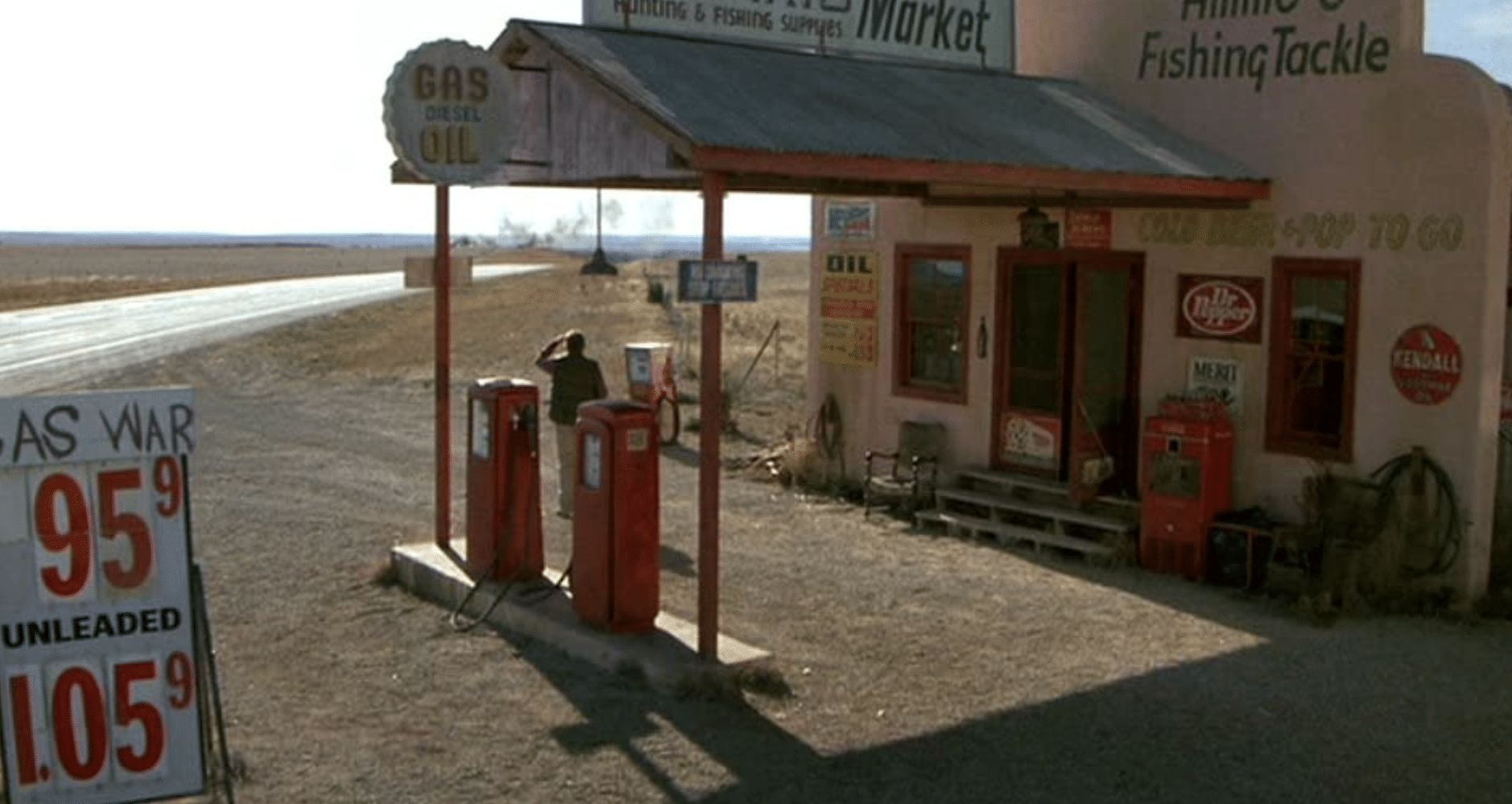
While the credited screenwriters of The Hunt for Red October are Larry Ferguson and Donald E Stewart, it’s routine in Hollywood for ‘script doctors’ to make uncredited contributions to the screenplay. In the case of The Hunt for Red October, some notable contributions were made by one of the most noted screenwriters of the last 50 years: John Milius. Milius is best known for writing Apocalypse Now, as well as co-writing and directing 1982’s Conan the Barbarian and 1984’s Red Dawn.
As a script doctor, he did uncredited work on the screenplays for Jaws (writing the celebrated USS Indianapolis speech) and the Dirty Harry movies (most famously Sudden Impact’s “make my day” scene). A noted military expert, Milius’ contributions to The Hunt for Red October include all of the Russian dialogue and a number of speeches for Sean Connery’s Ramius.
James Earl Jones was only the actor to return in the later Jack Ryan movies

The Hunt for Red October co-stars James Earl Jones as Admiral James Greer, Deputy Director of the CIA. The famously deep-voiced actor, best known for voicing Star Wars‘ Darth Vader and The Lion King‘s Mufasa, provides a commanding presence as the superior and mentor of Alec Baldwin’s Jack Ryan. Jones left such a mark on the role that he proved to be the only actor in The Hunt for Red October to come back in the sequels.
Both Patriot Games and Clear and Present Danger feature Jones alongside Harrison Ford’s Jack Ryan. The character of Greer did not appear in the subsequent two Jack Ryan films: The Sum of All Fears and Jack Ryan: Shadow Recruit. However, Greer has more recently been portrayed by Wendell Pierce in the TV series Tom Clancy’s Jack Ryan.
Sean Connery’s co-star Sam Neill almost played James Bond too
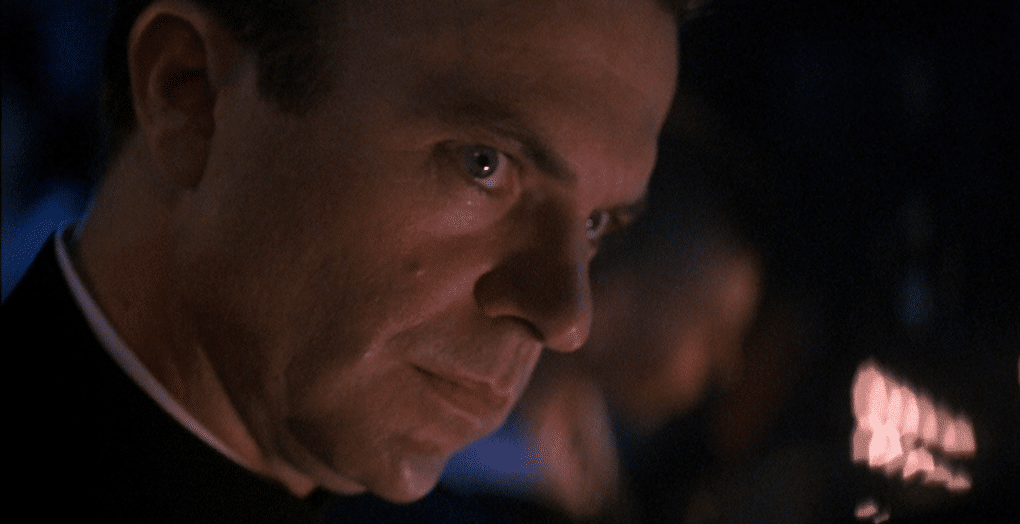
There are a number of James Bond connections on The Hunt for Red October, aside from the fact that it’s set in the world of espionage. For one, as mentioned earlier, Connery took the role of Marko Ramius when his Never Say Never Again co-star Klaus Maria Brandauer dropped out. In addition, Captain Borodin actor Sam Neill came very close to playing the same role that made Connery a superstar: James Bond himself.
Neill, who was born in Northern Ireland but raised in New Zealand, had been a serious contender to take over as 007 when Roger Moore retired from the role in 1985. Although the Bond producers were very impressed with Neill’s screen test, they decided he didn’t quite have the X-factor they were looking for. Ultimately, Timothy Dalton took over as the fourth James Bond actor in 1987’s The Living Daylights.
It was nominated for three Academy Awards and won one
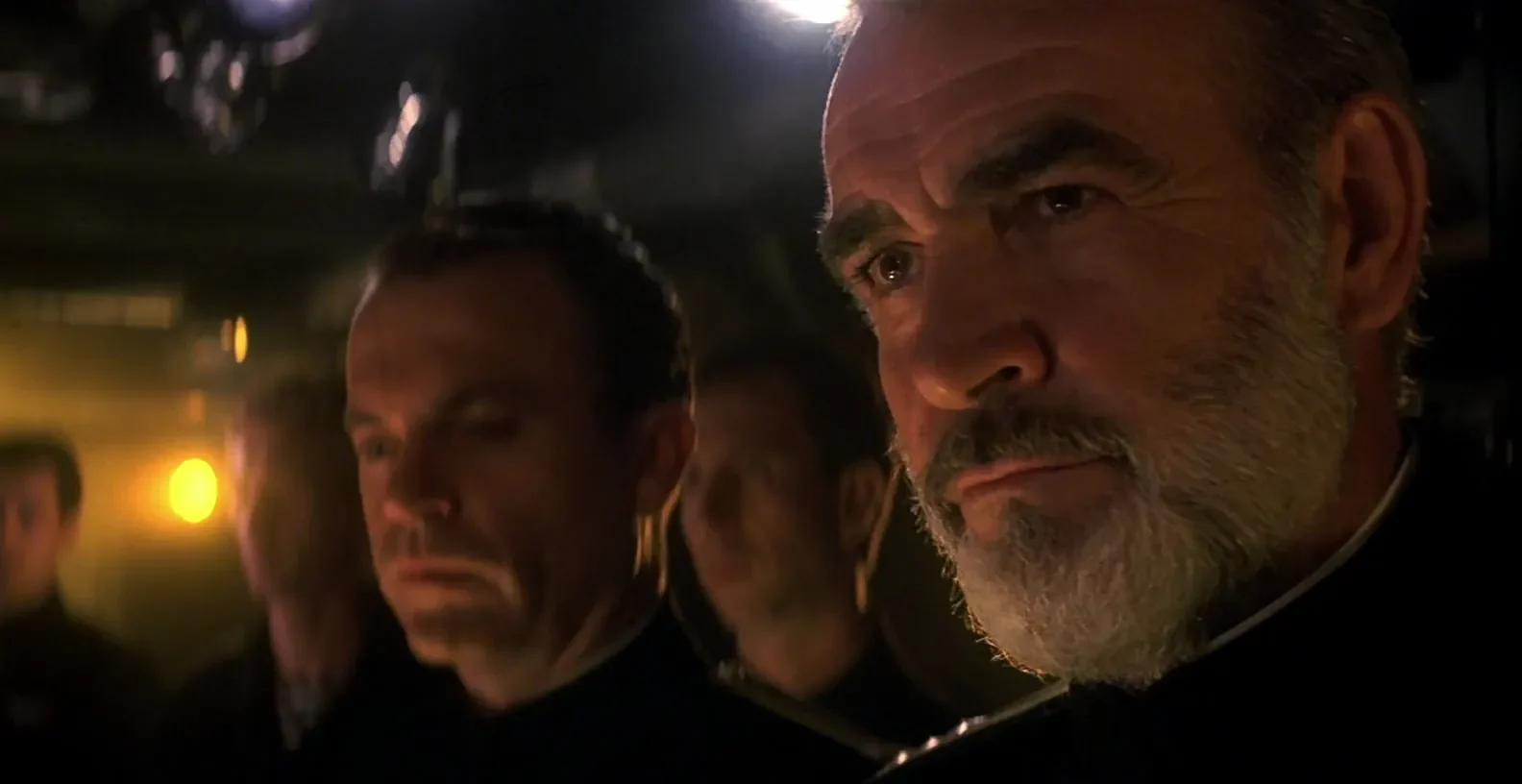
Did you know that The Hunt for Red October won an Oscar at the 63rd Academy Awards? As is often the case with more mainstream thrillers of its ilk, the Academy Awards listed the film in three key technical categories, only one of which it took home. The film was given the gong for Best Sound Effects Editing, the award going to engineers Cecelia Hall and George Watters II.
Hall had been the first woman to ever receive an Oscar nomination in this category for 1986’s Top Gun, and here she became the first woman to win the award. In the Best Sound Mixing category, it lost out to the big movie of the night, Dances with Wolves. Dances with Wolves also beat The Hunt for Red October in the other category it was nominated in: Best Film Editing.
It was the first of five films to feature Jack Ryan
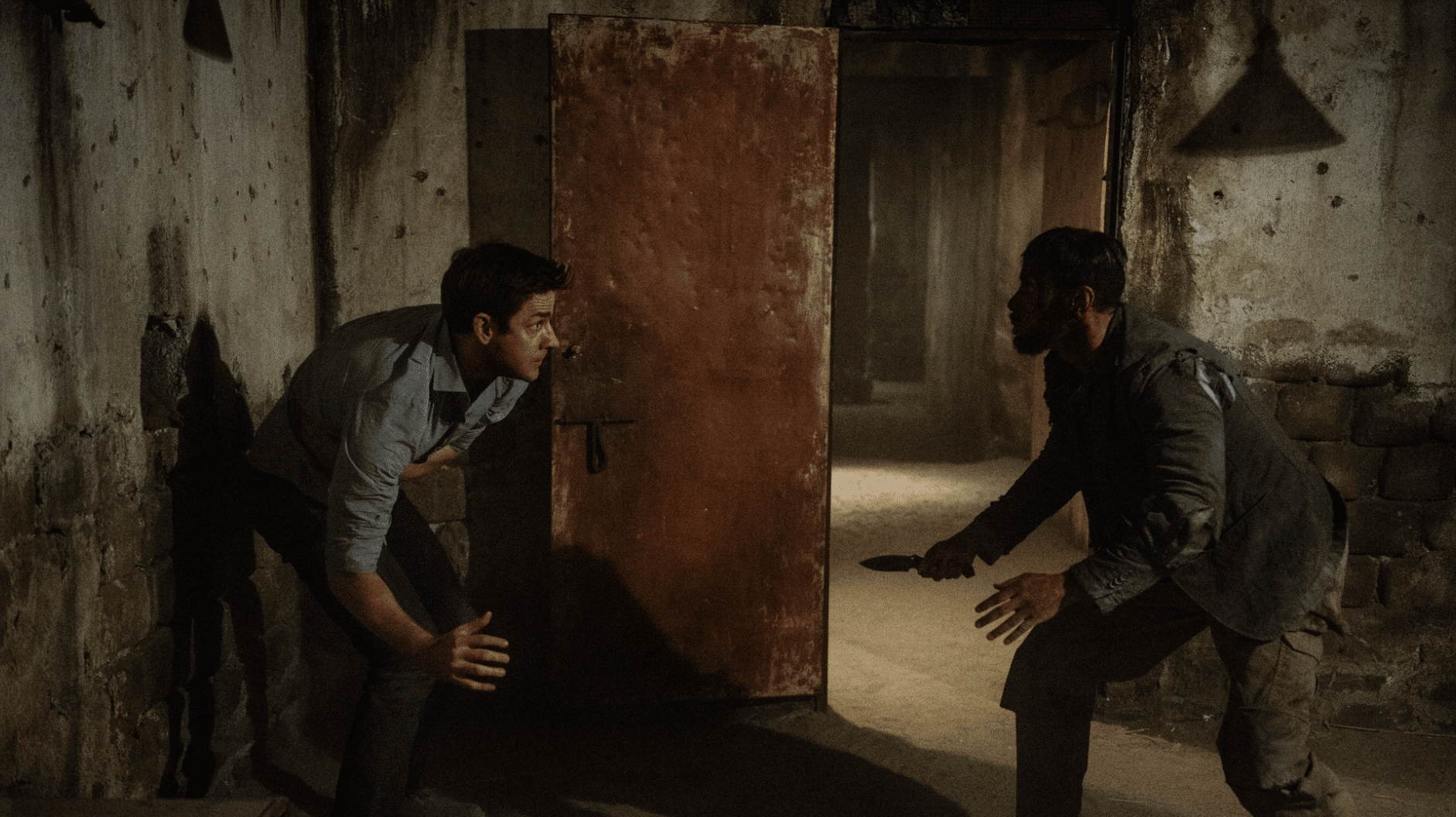
The Hunt for Red October was the first of five Paramount Pictures films to feature author Tom Clancy’s CIA agent hero Jack Ryan. The first sequel came in the form of 1992’s Patriot Games, which saw Harrison Ford take over as Jack Ryan. Ford then became the first (and, to date, only) actor to play Ryan a second time on the big screen in 1994’s Clear and Present Danger.
Jack Ryan was then absent from screens for eight years until Ben Affleck took over in 2002’s soft reboot The Sum of All Fears. 12 years after that, Chris Pine (Star Trek, Wonder Woman) took the title role in 2014’s Jack Ryan: Shadow Recruit. Finally, in 2018 John Krasinski took over for the Amazon Prime series Tom Clancy’s Jack Ryan.
Alec Baldwin nearly played Jack Ryan in two sequels, but was replaced by Harrison Ford
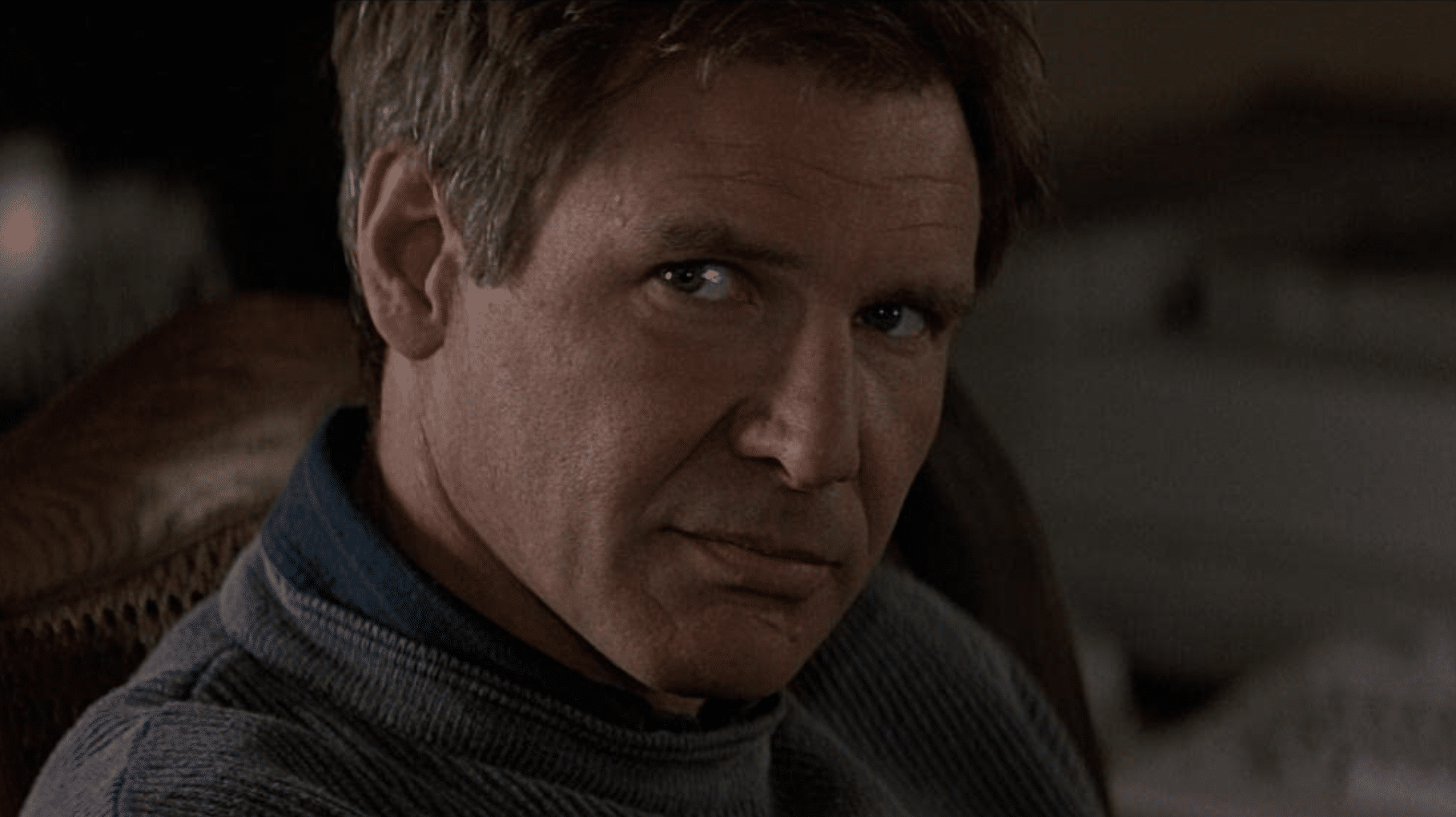
One key question that often comes up regarding the Jack Ryan movies is why Alec Baldwin didn’t return to play the role a second time. Reports vary as to quite why Baldwin didn’t reprise the role once Paramount decided to build a franchise around the character. Baldwin was in negotiations to play Ryan again in Patriot Games, but he had committed to a Broadway production of A Streetcar Named Desire which clashed with the shoot.
According to some reports, Baldwin turned down Patriot Games in order to honour his commitment to the stage play. However, others state that Paramount jumped at the chance to hire the more famous Harrison Ford once he showed interest in the role.
Congress thought the caterpillar drive was real

In the movie, the Red October is powered by a magnetohydrodynamic engine referred to as a “caterpillar drive” that allows it to glide silently through the water. When the film was released, concerned members of Congress contacted the CIA to find out how the Soviets had invented the caterpillar drive – which, while grounded in sound theory, was completely fictional – before the United States.
Subtle lighting was used to help the audience understand what was going on
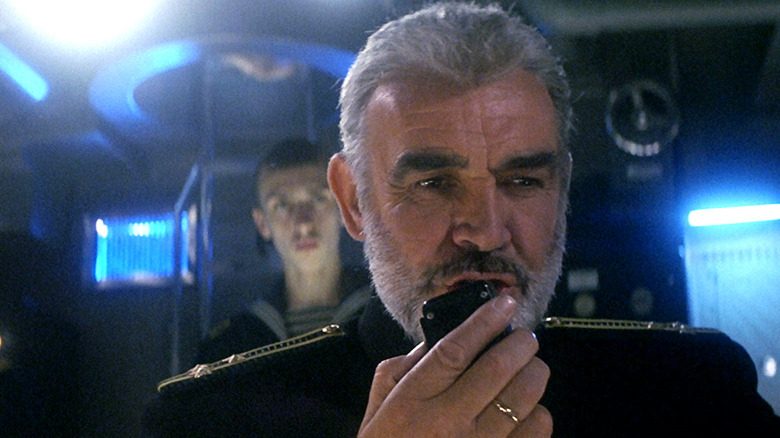
Since the interiors of all the submarines in the movie look remarkably similar, filmmakers realized that audiences would have a hard time understand what was going on during scenes which rapidly cut between subs. To help viewers out, each submarine has different interior lighting; blue for the Red October, green for the V.K. Konovalov and red for the Dallas.
A real Soviet submarine wouldn’t have had to leave Russia to strike the US
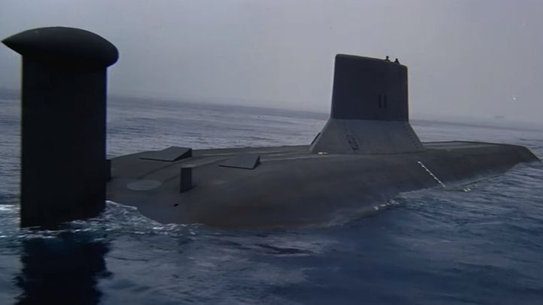
After the Red October is identified as a rogue sub, a member of naval intelligence informs his superior that its missiles will be able to hit the United States within three days, once the submarine is near the coast of the United States. In reality, a Soviet Typhoon nuclear submarine would have been able to hit the United States while still docked in the USSR.
A real-life submarine commander comes in for some flak
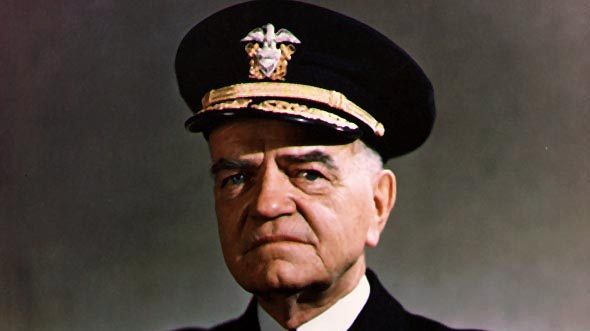
In the movie, when Jack Ryan mentions a book he has written about Admiral Halsey, Ramius responds that the conclusion drawn in the book was wrong, as Halsey’s actions had been stupid. The incident they are referring to is the Battle of Leyte Gulf, which took place in 1944. During the battle, a mistake made by Admiral Halsey almost allowed Japanese subs to decimate the United States Navy.
The film accidentally revealed top-secret military tech
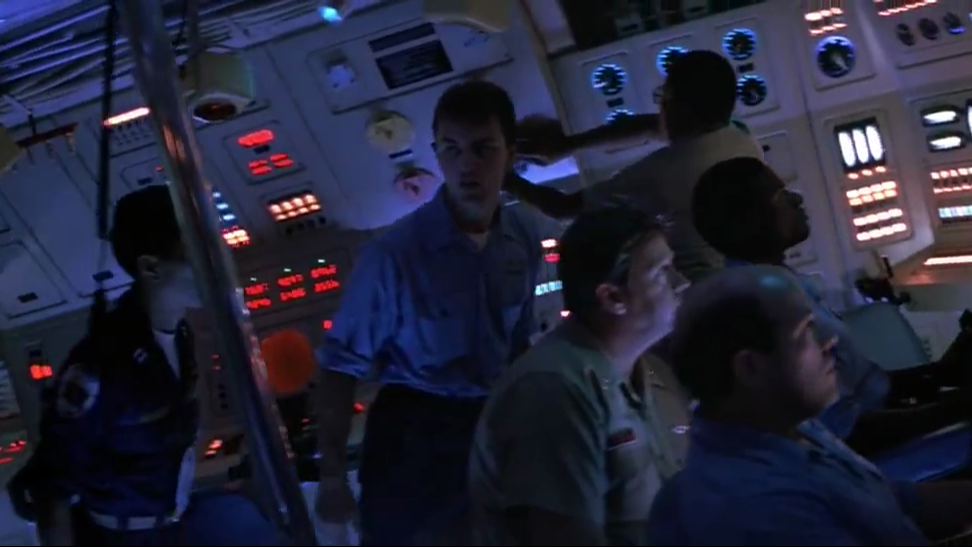
When the U.S.S. Dallas is pursuing the Red October, one of its crew mentions a “milliGal anomaly.” This revealed the existence of a top-secret military program that was experimenting with using gravitational instruments as sensors, allowing submarines to navigate without sonar (which reveals their location). The project – run by Bell Aerospace – was abandoned by the military after the film, and the tech is now used for locating oil.
The underwater model of the Red October never touched water
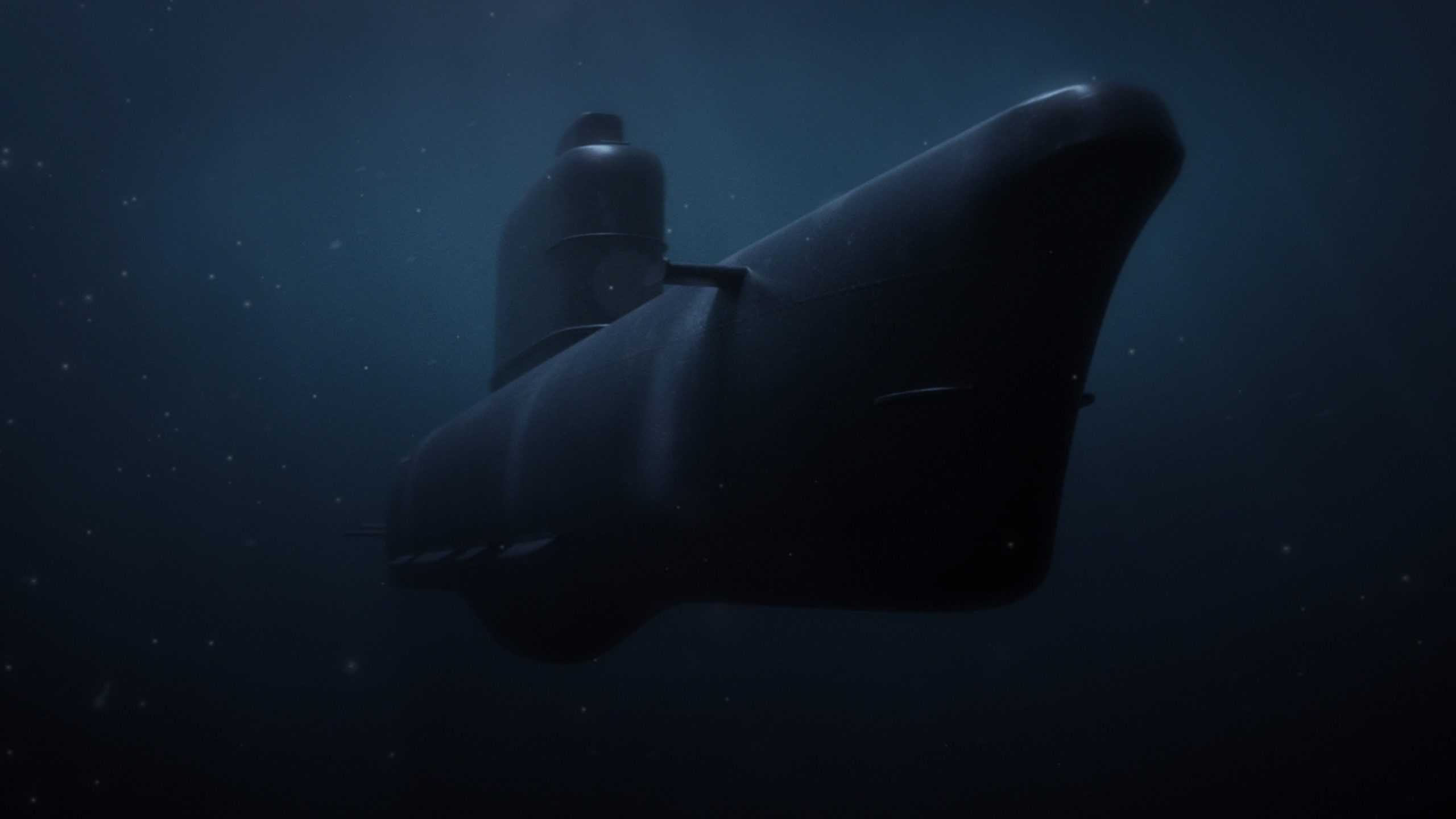
In order to film exterior shots for the underwater scenes, filmmakers had a large model of the Red October built. However, this model was never actually submerged. Instead, dry ice was used to create mist which made it look like the model was underwater, with digital effects being used to make it seem more realistic.
An accident during filming resulted in a death
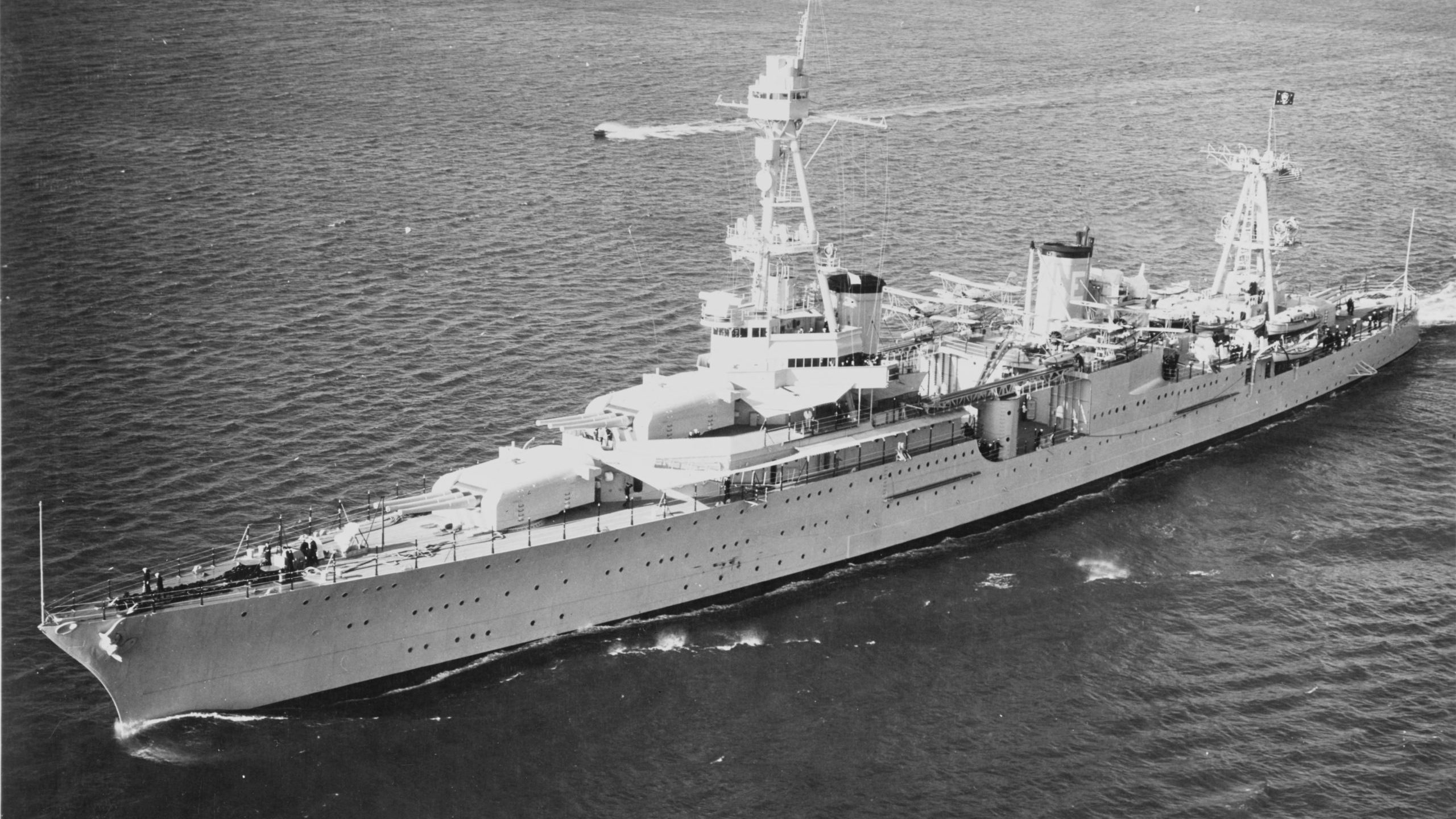
During the production of Red October in 1989, the U.S.S. Houston – which appears as the U.S.S. Dallas in the film – caught the cable connecting a commercial tugboat to a barge, ten miles out to sea. The incident caused the tugboat to sink, leading to the drowning of one of its crew. The other members of the crew were successfully rescued.
Sean Connery initially turned the film down
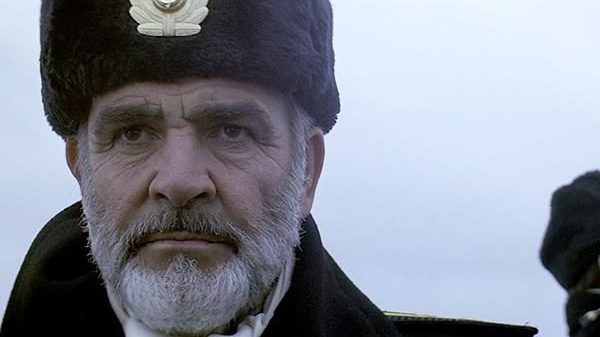
After he was tapped as a replacement for Klaus Maria Brandauer, Sean Connery was faxed a copy of the script. The actor found the plot farfetched, however, and turned the film down. It quickly transpired that the foreword to the script – which made the rest of the plot plausible – hadn’t been sent, and once this had been corrected Connery agreed to star.
The fact that an officer is called Putin was a coincidence
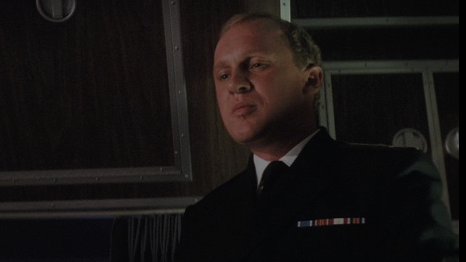
A common myth surrounding The Hunt for Red October is that the political officer aboard the titular submarine is named Putin in reference to Vladimir Putin. This is almost certainly just a coincidence, as the real-life Putin would have been a low-ranking KGB officer at the time the film was made.
There’s footage of a real plane crash in the film
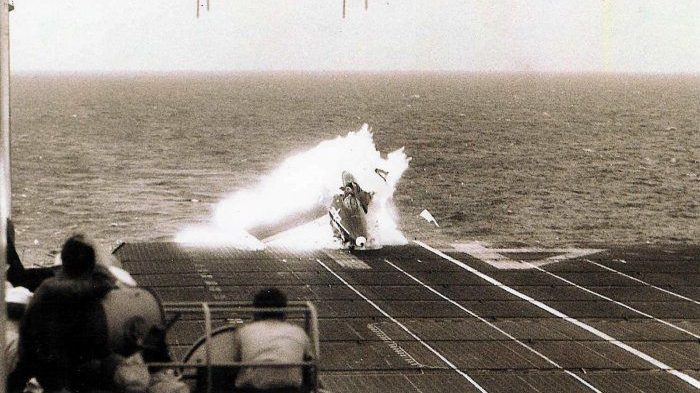
For the shot of the fighter jet crashing into the flight deck, filmmakers used stock footage of an F9F Panther crashing during a flight test in 1951. The plane was piloted by test pilot George Chamberlain Duncan, who survived the crash, walking away with minor burns and soon taking to the skies once again.
The teddy from Die Hard makes an appearance

Although John McTiernan had to turn down the Die Hard sequel to direct The Hunt for Red October, he did sneak in a reference to the first Die Hard film. The teddy bear which Jack Ryan buys for his daughter is the very same toy that John McClane (played by Bruce Willis) is seen with in the original Die Hard.
Scott Glenn based his performance on a real-life admiral
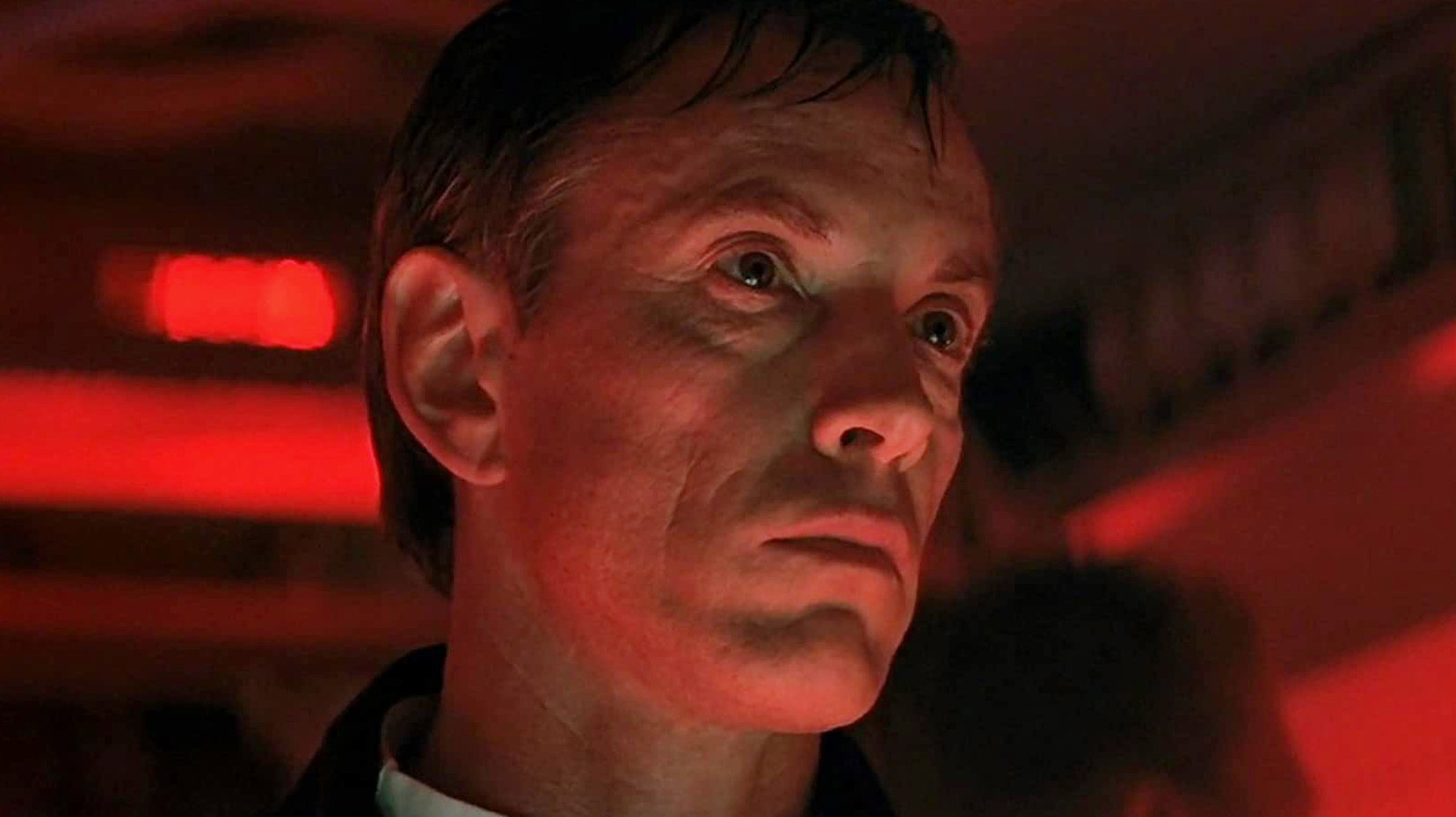
While researching their roles before filming commenced, a number of actors from the film spent some time on the U.S.S. Salt Lake City, a Los Angeles-class submarine. Scott Glenn spent a lot of time shadowing Admiral Thomas Fargo, the submarine’s commander, and would base his performance on the Admiral’s mannerisms.
Gates McFadden got a raw deal
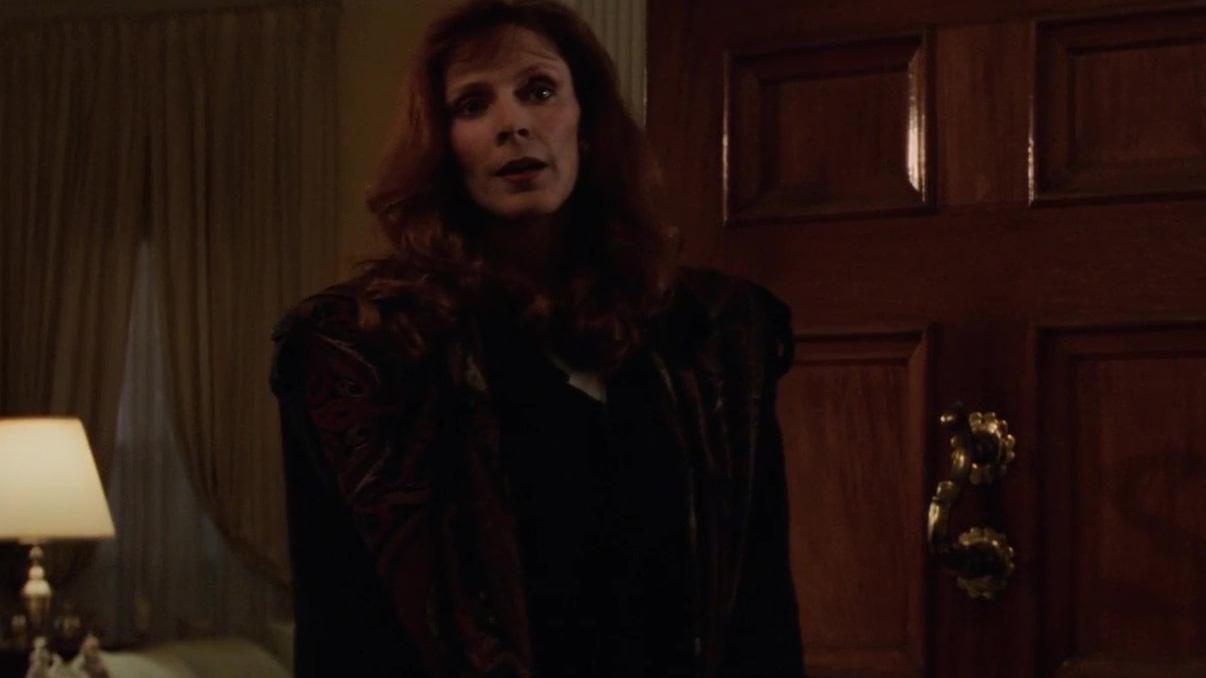
Although Cathy Ryan barely features in the movie, Gates McFadden agreed to take the role because she was promised it would be expanded in the sequel. While this proved true, McFadden was replaced by Anne Archer after Alec Baldwin was replaced by Harrison Ford, as the studio felt it would be better to have two new actors.
The Red October probably wouldn’t have had a periscope
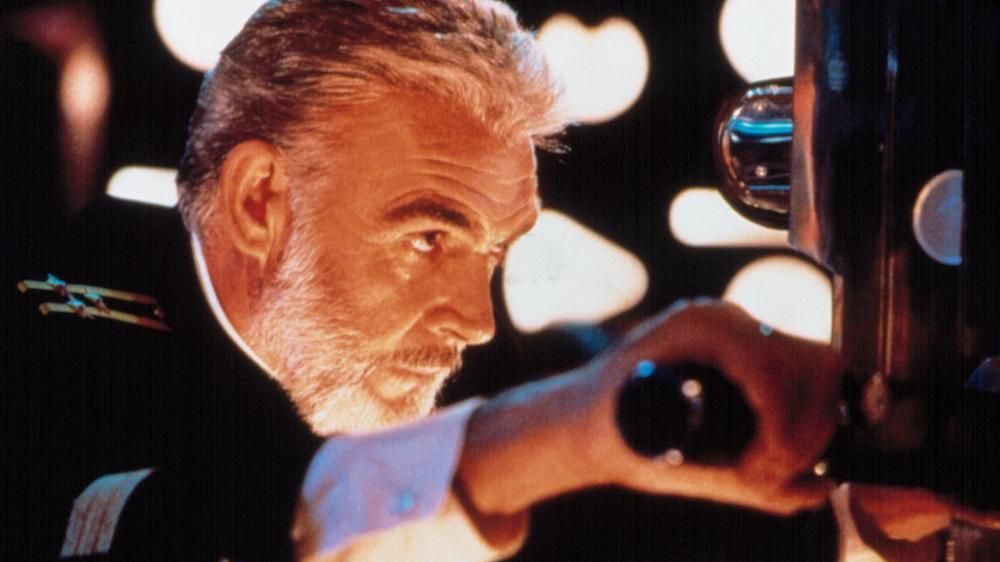
While the interiors of the American submarines are incredibly realistic, the production designers had to essentially guess what the Russian subs would have looked like. Retired submarine commander James H Patton Jr was consulted, and he speculated that the Red October wouldn’t have had a periscope, due to its operational depth. His advice was disregarded, however, as the filmmakers liked the look of the periscope.
There’s a reference to another Tom Clancy book
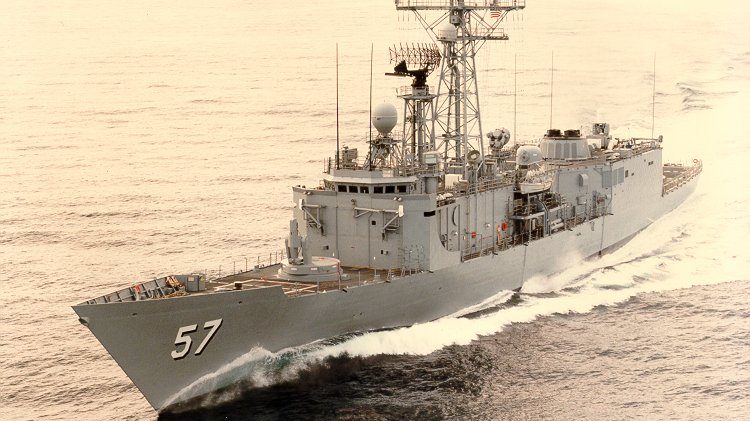
In the scene in which the crew of the Red October are rescued, the frigate that saves them is named the Reuben James. This frigate – which is a real-life ship used by the United States Navy – also features prominently in Red Storm Rising, another Tom Clancy novel released in 1986.
Recordings of Disneyland rides were used in the sound design
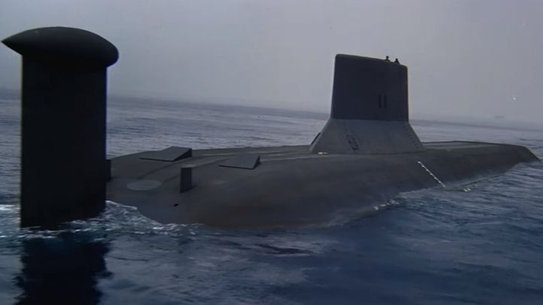
Getting the sound design right for the submarine scenes proved to be tricky, as it’s hard to emulate the noise of hundreds of tons of metal under pressure. In the end, the sound design team found the solution in an unexpected place: Disneyland. Most of the creaks and groans that can be heard throughout the submarine scenes are actually just recordings of Space Mountain and other rides.
Sean Connery got to go on a real submarine
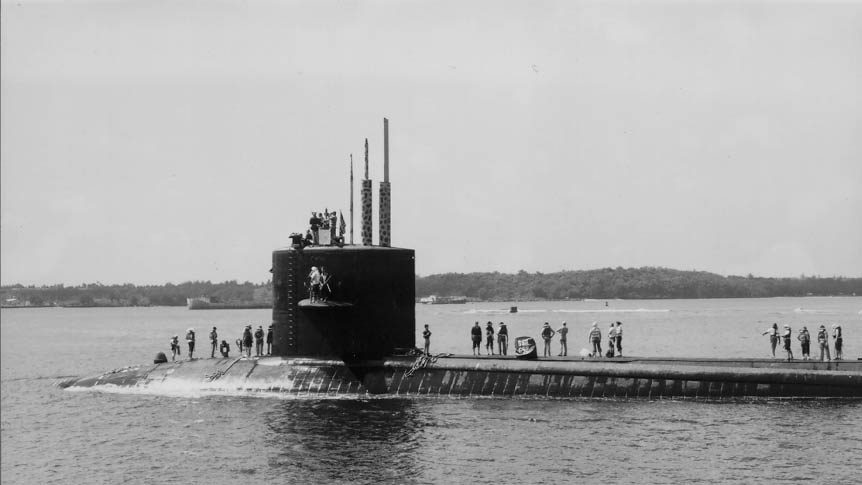
During production of The Hunt for Red October, Sean Connery spent some time on a real submarine, the U.S.S. Puffer (which, interestingly, is the second US Navy vessel to be named after the pufferfish). Connery was even made temporary Commander and allowed to issue orders, albeit under the watchful eye of the real captain.
There’s a reference to Moby Dick
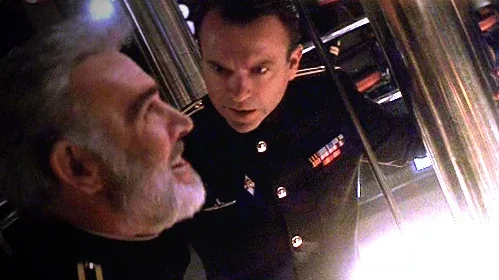
A conversation that takes place between Captain Ramius and Vasili Borodin clearly references Moby Dick, the legendary novel penned by Herman Melville. Ramius mentions spending 40 years at sea – just like Captain Ahab, Moby Dick’s protagonist – and his quote about widowing his wife the day he married her is taken straight from the book.
Klaus Maria Brandauer and Sean Connery appeared together in another Cold War film
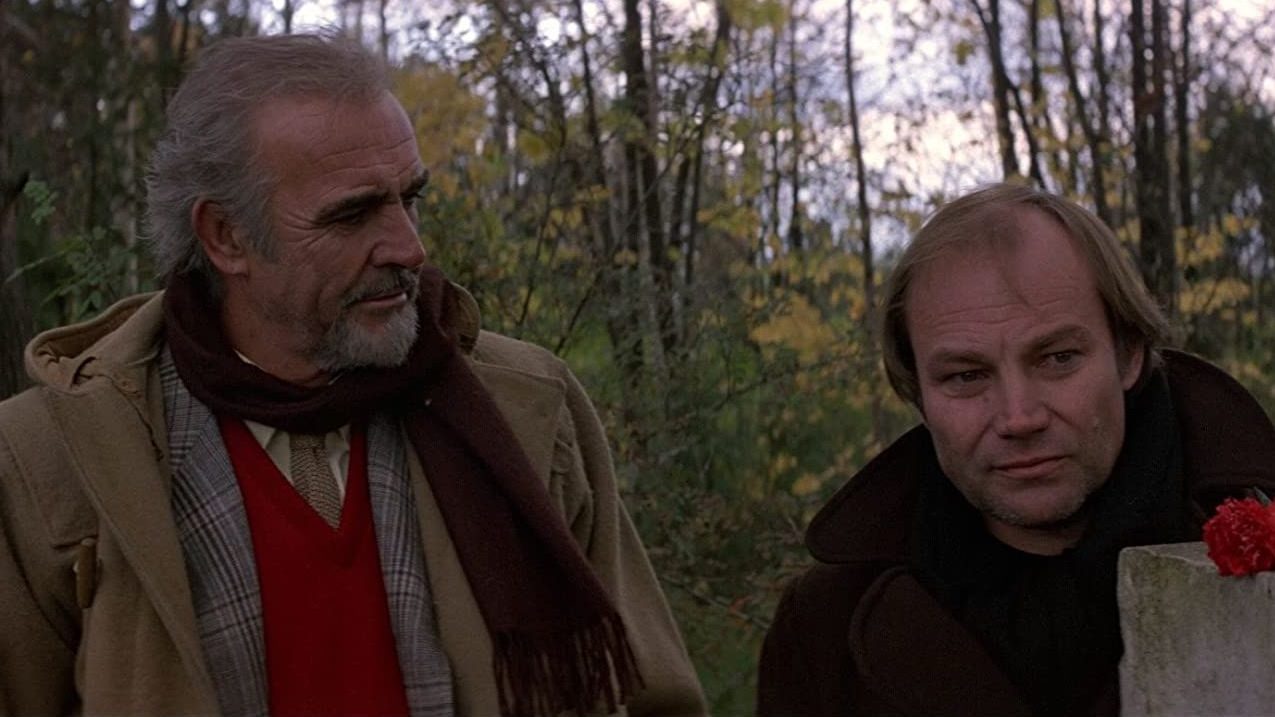
Prior to Sean Connery replacing Klaus Maria Branduer in The Hunt for Red October, the actors had worked together on 1983’s Never Say Never Again. It wasn’t long before they collaborated again, this time in 1990’s The Russia House, another movie set during the Cold War.
Actual submarine builders worked on the sets
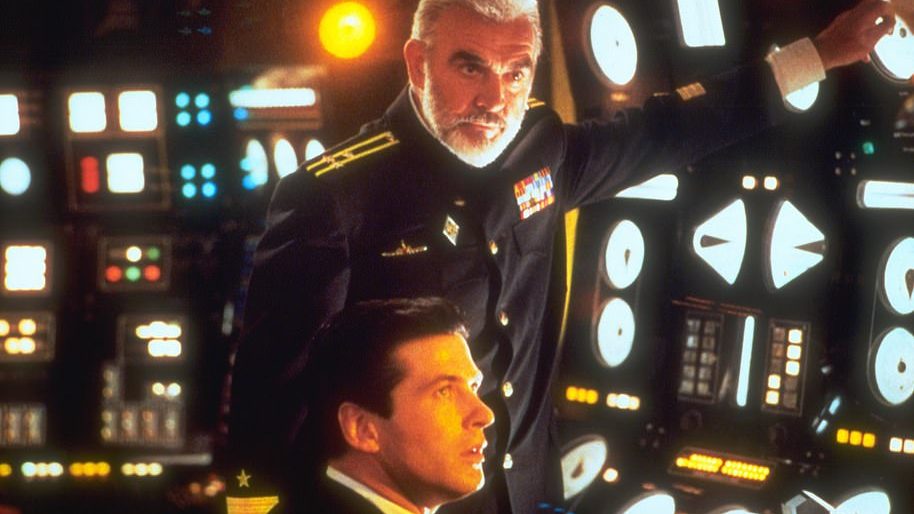
During production, several employees from the Newport News Shipbuilding and Drydock Company that had previous experience building submarines were brought in to help design the sets of the Red October and U.S.S. Dallas. They ensured that the interiors all looked completely realistic, even using components from real submarines.
A Thomas Jefferson quote is referenced
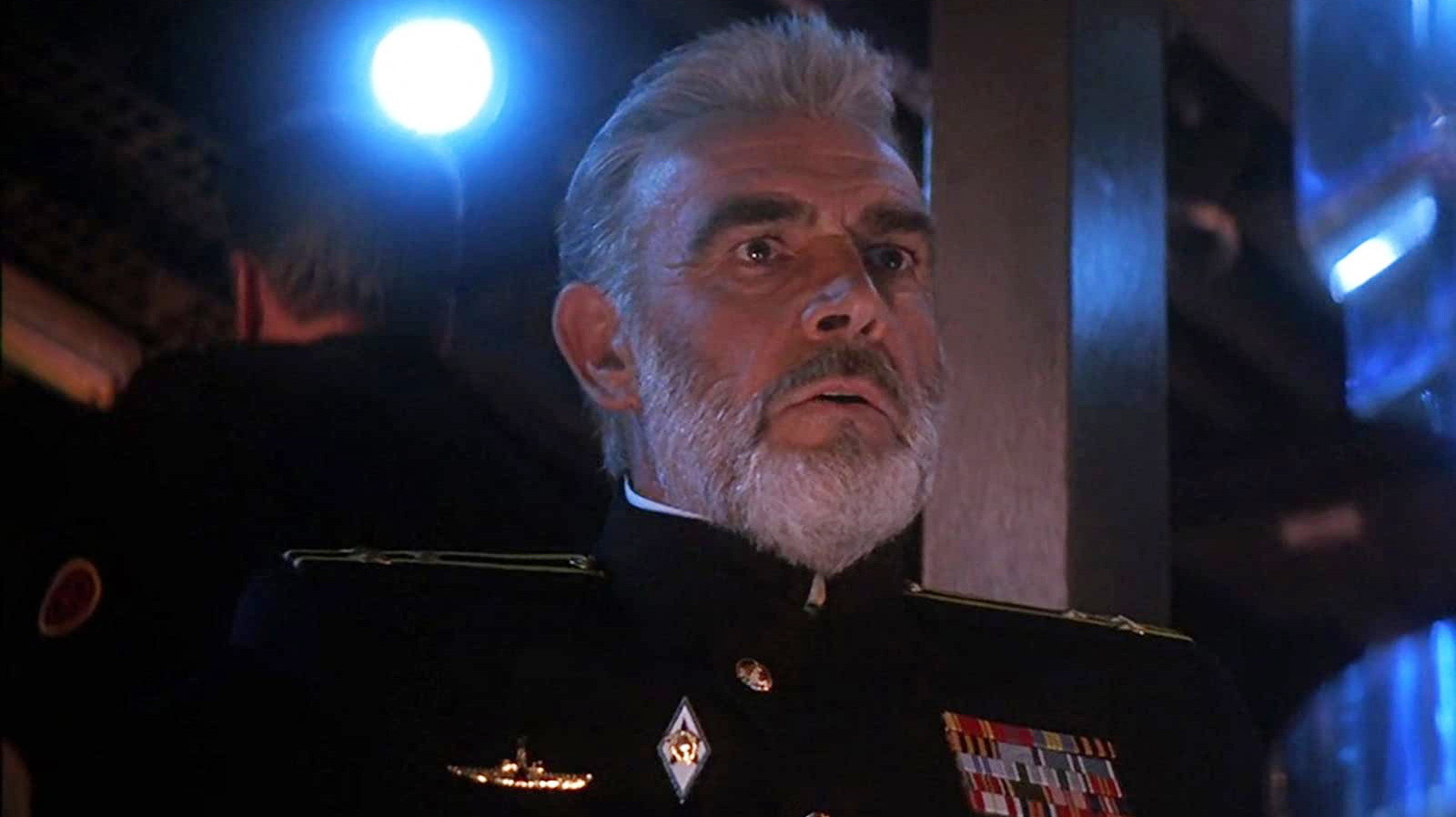
Captain Ramius’ line, “A little revolution now and then, is a healthy thing. Don’t you think?”, is a slightly altered version of a line Thomas Jefferson wrote in a letter to James Madison. Both Jefferson and Madison were central figures in the American Revolution, which saw the United States fight the British for independence.
The first editor was replaced
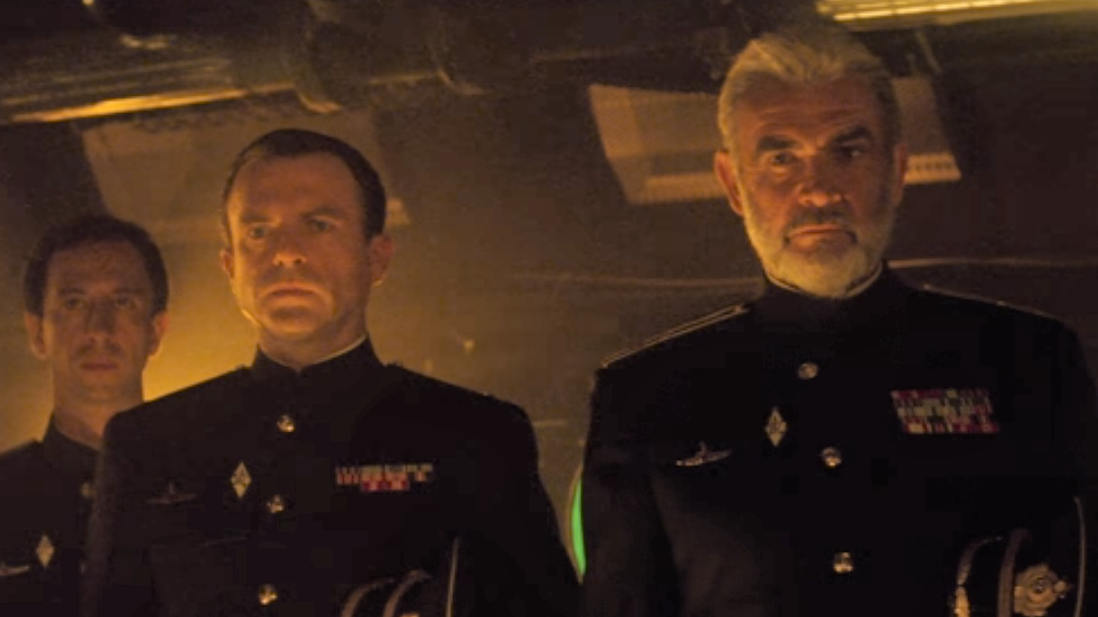
The first editor hired for The Hunt for Red October was Peter Zinner, who had previously worked on films including The Deer Hunter, The Godfather and An Officer and a Gentleman. Zinner found McTiernan’s style of filming hard to edit, however, and he was replaced by Dennis Virkler and John Wright. It wasn’t all bad for Zinner, as he still made a cameo in the film as a Soviet Admiral.
A line was added for the sake of clarity
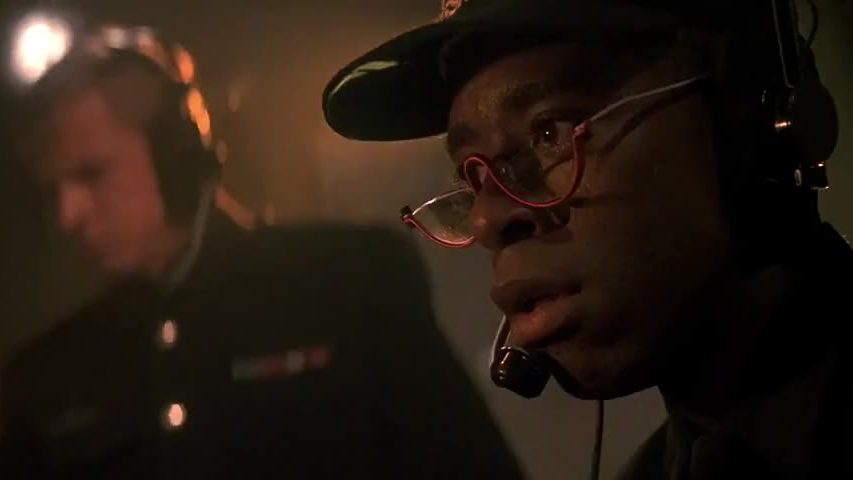
In the scene in which the Red October is detected by the U.S.S. Dallas, the sonar operator exclaims: “I’d say we had a boomer coming out of the barn. Could be a missile boat out of Polyarny.” Both these sentences carry the exact same meaning, but the second line was added after filmmakers realized viewers probably wouldn’t understand the first.
Alec Baldwin is still angry about being replaced
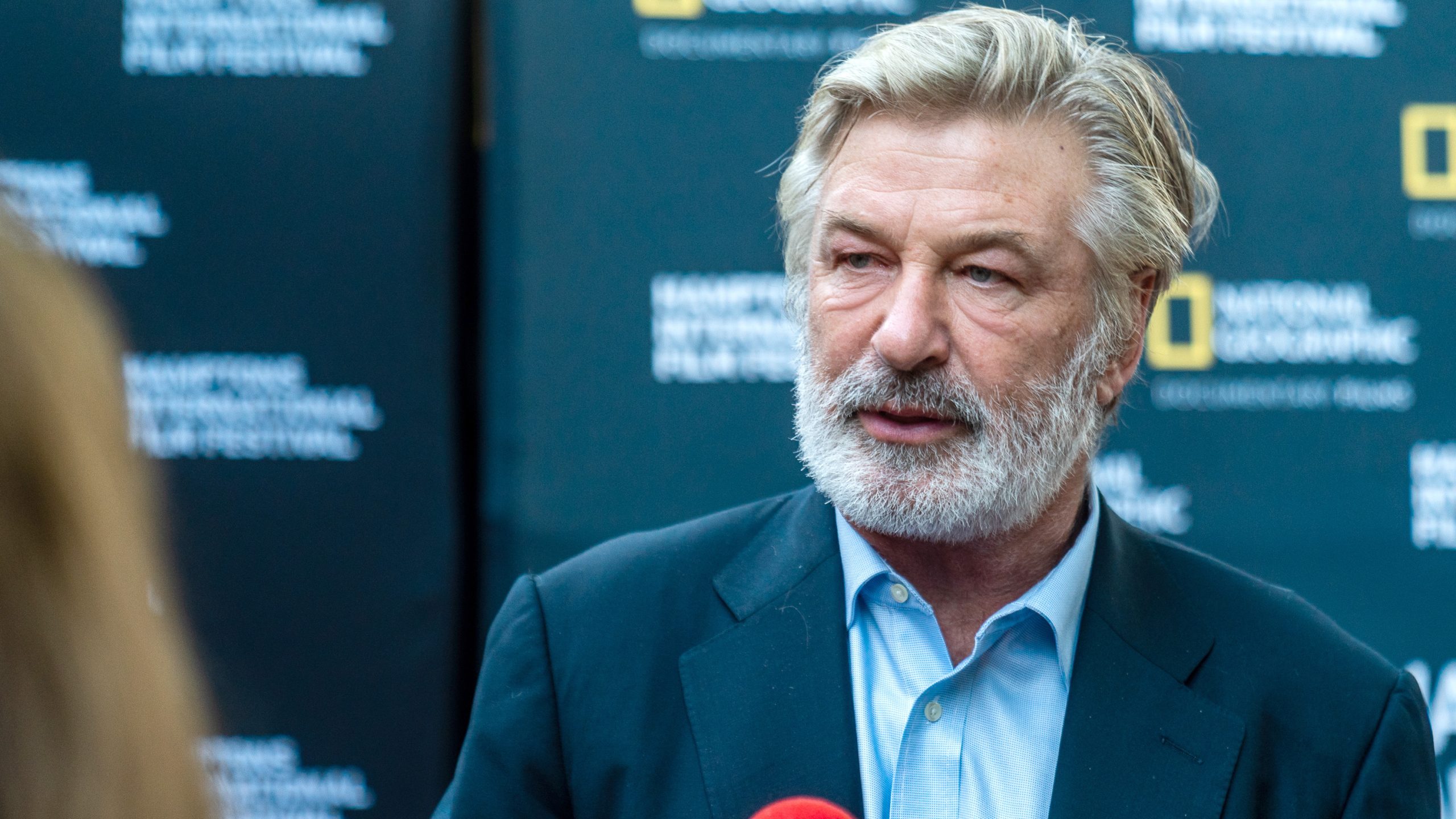
Alec Baldwin is known for his temper, and it seems he still hasn’t gotten over being replaced by Harrison Ford in 1992’s Patriot Games. In his 2017 memoir, Baldwin reflects on the incident before training his sights on Ford, describing him as ‘a little man, short, scrawny, and wiry,’ and mocking him for having never won an Oscar.
There’s an amusing weather-related continuity error
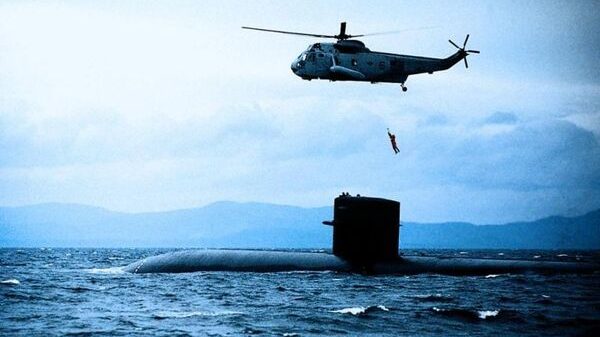
In the scene in which Jack Ryan is in the helicopter approaching the U.S.S. Dallas, the dialogue mentions how bad the weather is, which will make transferring dangerous. During the external shots, however, the sea is shown to be completely calm, meaning there is barely any wind at all and suggesting Ryan is being overly dramatic.
A shot of the film appears in an episode of 30 Rock
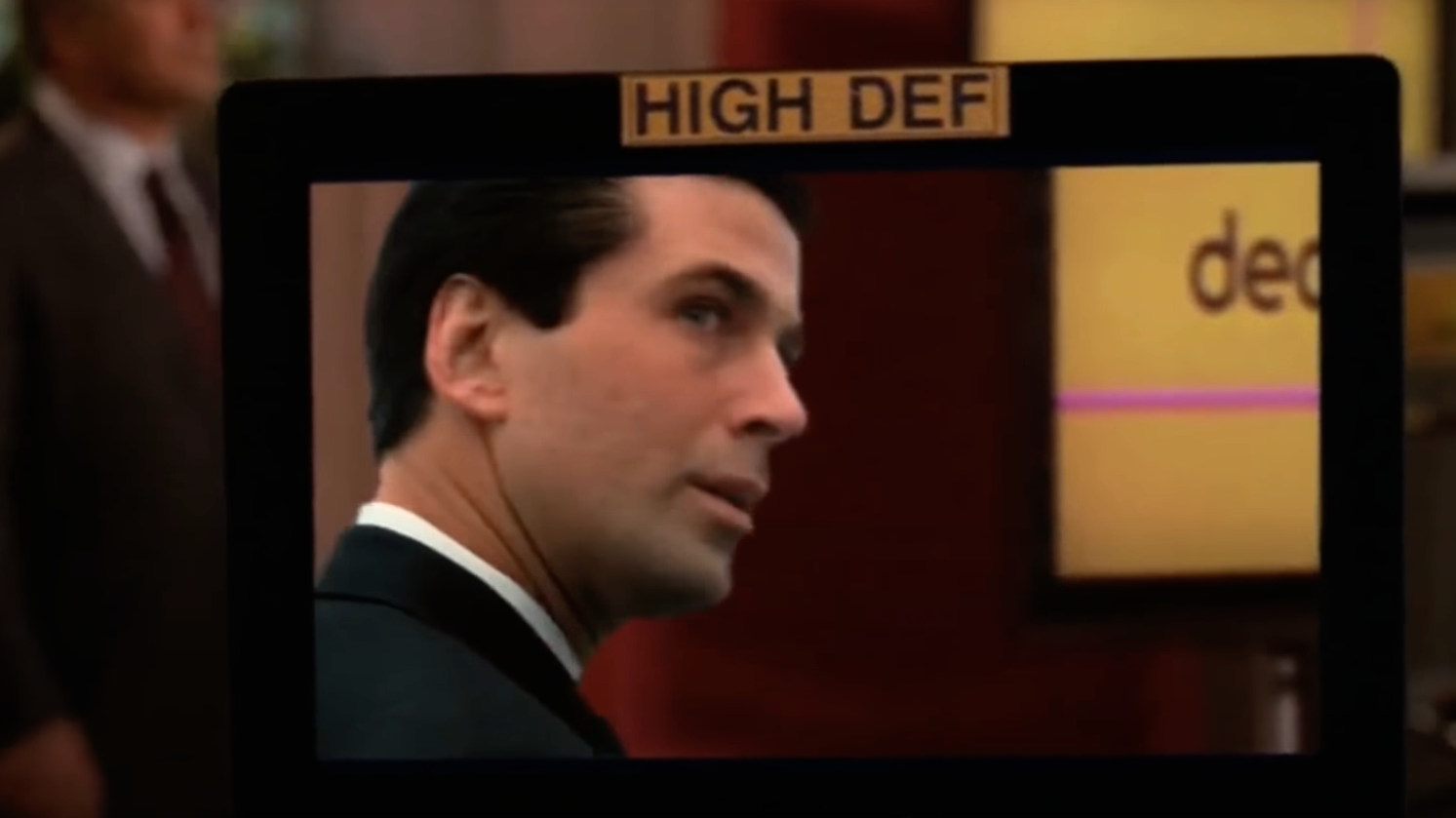
A brief shot from the movie appears in an episode of 30 Rock, Tina Fey’s acclaimed comedy in which Alec Baldwin has a recurring role. The moment occurs during a gag involving a high-definition camera that makes its subjects look ridiculous, with the exception of Baldwin’s character, who appears on the monitor as he does in The Hunt for Red October.
Russian government officials visited the set
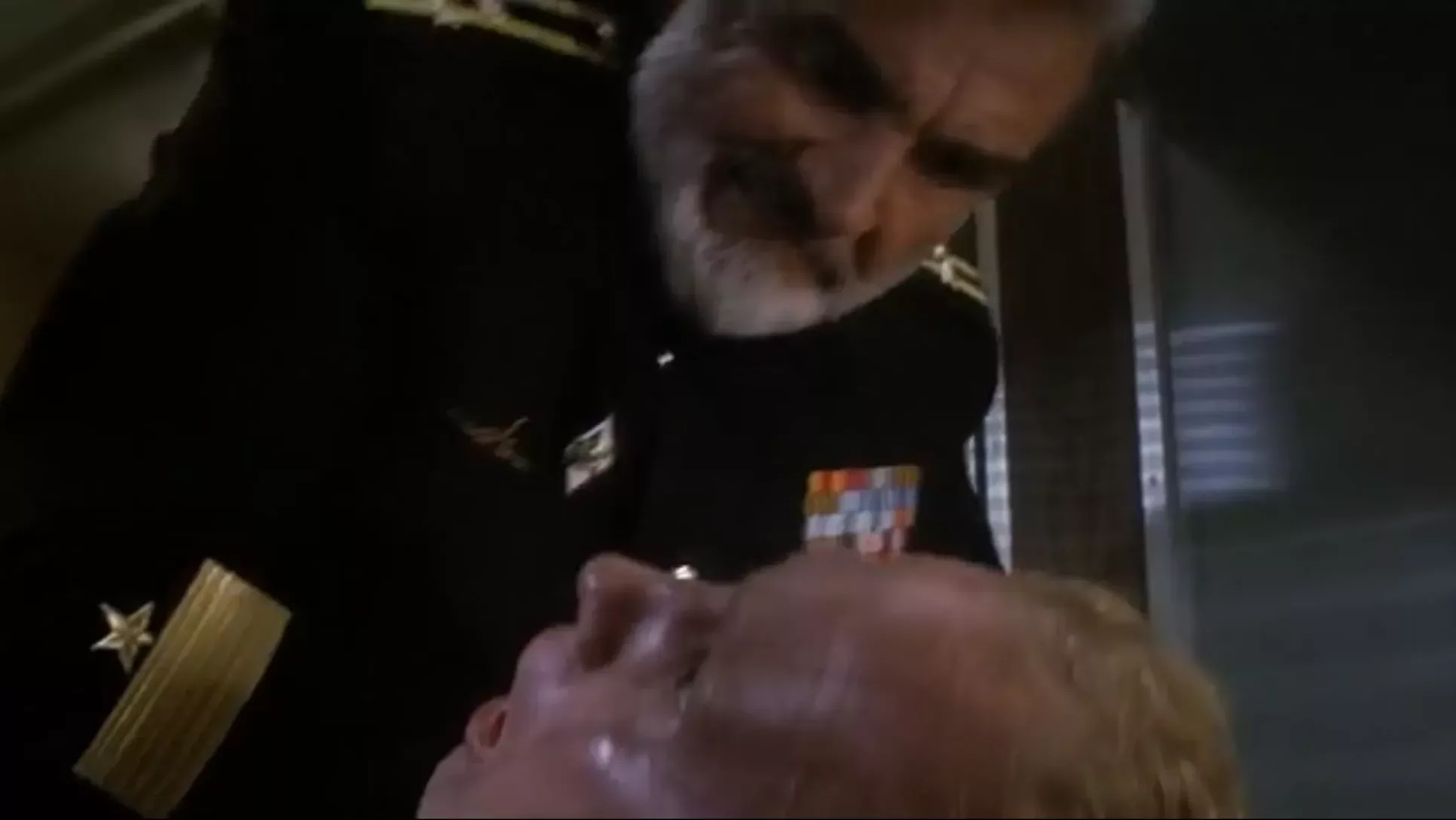
According to Sean Connery and Peter Firth, Russian government officials paid a visit to the set one day while they were visiting the United States. They ended up watching the scene in which Putin – the political officer aboard the Red October – is murdered by Captain Ramius so that he won’t interfere with plans to defect to the US.
None of the Soviet officers would have had facial hair
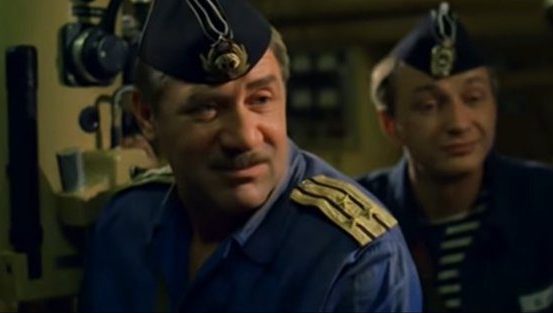
Throughout The Hunt for Red October, many of the Soviet naval officers are shown with beards or mustaches. In reality, Soviet naval policy explicitly forbid officers from sporting any kind of facial hair. Unlike some other details that the filmmakers had to guess at, this would have been fairly common knowledge.
Tom Clancy makes a cameo
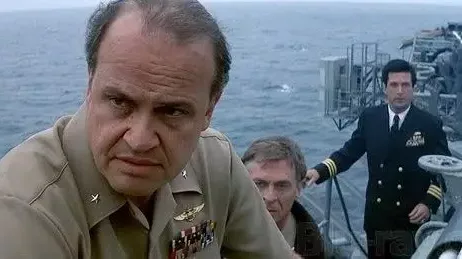
Although he didn’t have any personal experience in the area, Tom Clancy became one of the most well-known authors of his time with his detailed novels involving military espionage. Clancy’s first novel was The Hunt for Red October, and he makes a cameo in the film adaptation, as one of the crew on the deck of the U.S.S. Reuben James.
The Russian title is wrong

At the beginning of the film, the word’s Krasnij Oktjabr – supposedly spelling ‘Red October’ in Russian – are displayed in bold red lettering against a black background. However, these words are comprised of a nonsensical mix of Cyrillic (the alphabet used by many Slavic languages) and latin letters.